NFL Big Board 4.0: Ranking the top 50 prospects ahead of the combine

So much will change in the NFL draft landscape over the next 15 days or so. Next Tuesday, the annual scouting begins in Indianapolis—330 draft hopefuls and just about every coach and front-office member in the league descend on Lucas Oil Stadium. Shortly thereafter, on March 9, free agency officially opens, with players and teams putting pen to paper on contracts they will have spent the previous “legal tampering period” negotiating.
By the time the dust settles, there should be a much clearer picture of how the draft may play out. The scouting combine, though, should not make or break perceptions of any of the attending prospects. It is a small (if very important) part of the process.
Here’s how the top-50 Big Board shapes up, as Indianapolis looms:
1. Myles Garrett, Edge (Junior, Texas A&M)
Even folks just now dipping a toe into the 2017 draft pool are aware of how highly regarded Garrett is among this class. He has rare burst and finish off the edge, the type of skill set that can dominant at the next level. If he’s not producing double-digit sack seasons on the regular by 2018, it’ll be a disappointment.
2. Reuben Foster, LB (Senior, Alabama)
While Cleveland may not grab Foster at No. 1 overall, San Francisco should kick the tires at No. 2. That’s rarefied air for an off-ball linebacker, but Foster’s blend of abilities as a three-down defender is worth the attention.
3. Jonathan Allen, DL (Senior, Alabama)
WRs and TEs often are discussed in terms of the mismatches they can create. There ought to be similar conversations about Allen. Sure, a team could draft him to play exclusively at end or tackle, but his real value comes from being able to dominate from multiple spots.
4. Jamal Adams, S (Junior, LSU)
Think of safeties like Earl Thomas, Eric Berry, Troy Polamalu and Ed Reed. It’s not just that they were great players on their own, it’s that their respective defenses took on their personalities. Adams has that same alpha-dog approach, with the talent to back it.
2017 NFL Mock Draft 6.0: Post-Super Bowl look at the first three rounds
5. Dalvin Cook, RB (Junior, Florida State)
As it does, the NFL will dig—Cook has a history of shoulder issues, and he was suspended during the 2015 off-season while awaiting a trial (he was found not guilty of misdemeanor battery). The team that takes the leap will land a game-changing back that can create huge plays out of nothing.
6. Marshon Lattimore, CB (RS Sophomore, Ohio State)
It’s mind-boggling to watch Lattimore’s 2016 performance knowing that he a.) was just a redshirt sophomore, and b.) did not start full-time until that season. He is so comfortable and advanced in press coverage that the sky is the limit once he gains experience.
7. Corey Davis, WR (Senior, Western Michigan)
Everything Davis does just looks so smooth, like he was handcrafted to play the receiver position. The routes, the explosion after the catch, the finishing ability—it’s all there. Unfortunately, an ankle injury will keep him from working out at the combine.
8. Solomon Thomas, DL (Junior, Stanford)
Thomas is front and center this year in the case of how prospects get overly nitpicked. Is he too light to play inside? Does he have the length to live outside? You can worry about about those questions, or you can focus on the fact that he has the get-off and nuance in his approach to pummel offensive linemen.
9. Quincy Wilson, CB (Junior, Florida)
Another physical, in-your-face cornerback, who also will help control the opposing run game because of how aggressive he is working downhill. There has been some buzz about how well Wilson’s skills fit at safety, but why move him when he has lock-down traits at CB?
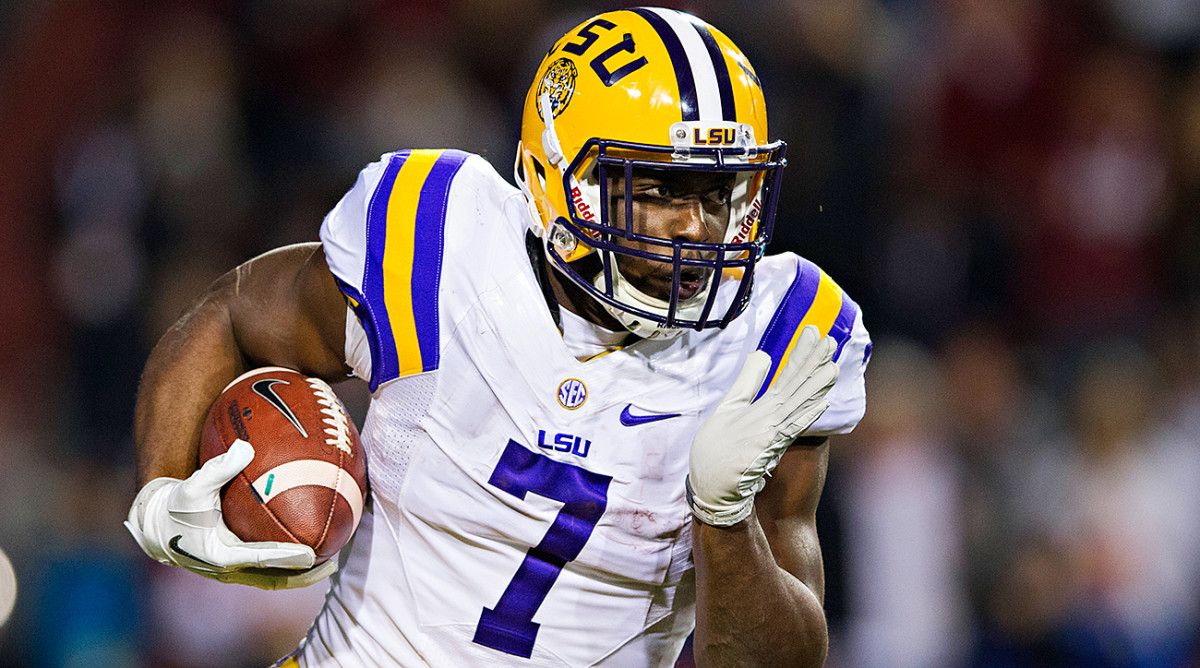
10. Leonard Fournette, RB (Junior, LSU)
The type of back that makes defenders feel every single contact with him, Fournette is a bruising 235-pounder with the speed to pull away once he reaches the open field. If he finds the right fit, there is Ezekiel Elliott-like potential for his rookie season.
11. Sidney Jones, CB (Junior, Washington)
The lack of bulk may always stand as a challenge for Jones, assuming he doesn’t show up with an extra 20 pounds next season. Aside from that, good luck finding a glaring weakness in his game. He’s always around the ball when it’s thrown his direction.
12. Malik Hooker, S (RS Sophomore, Ohio State)
Quarterbacks have to go out of their way to misdirect Hooker, because if he is anywhere in the vicinity when they fire a pass, he’ll attempt a play on it. He won’t be a menace vs. the run early on, but he can be a turnover-creating machine.
13. Tim Williams, OLB (Senior, Alabama)
His NFL coaching staff will have to mold him into being more than a pass rusher, though that journey started in earnest in 2016. But even if he is just a specialist out of the gate, his knack for bending the edge to chase down quarterbacks will be of exceptional value.
Draft This Dude: Donnel Pumphrey will make you pay for letting his size spoil his stats
14. Deshaun Watson, QB (Junior, Clemson)
All of the perceived top QBs in this class have issues that will give teams pause. In Watson’s case, it’s the turnovers (17 INTs), several of which were caused by poor reads. There is still far more good than bad here. Watson has proven himself on big stages, and he has the arm, athleticism and processing ability required to thrive.
15. O.J. Howard, TE (Senior, Alabama)
The mystery that may never be answered: Did Alabama O.C. Lane Kiffin fail to utilize Howard fully, or did Kiffin feel that he couldn’t count on Howard to take over games on a consistent basis? Barring further evidence, let’s go with the former. Howard has all the athletic gifts to be a featured weapon.
16. Malik McDowell, DT (Junior, Michigan State)
Dip back to October, before an ankle injury cut into McDowell’s season, or back to 2015 and it won’t take long to see why McDowell has top-20 potential. He has the cut of a standout 3–4 NFL DE.
17. Mike Williams, WR (Junior, Clemson)
Williams fits the prototype for an outside, potential No. 1 receiver. He has size and strength, plus sets up cornerbacks just enough to gain separation deep. And good luck stopping him on a slant route.
18. Derek Barnett, DE (Junior, Tennessee)
Barnett is very difficult for offensive tackles to block one-on-one, because he is explosive off the snap and works to keep his hands free. His 32 career sacks while with the Vols weren’t freebies—he worked for them despite heavy attention from opposing blockers.
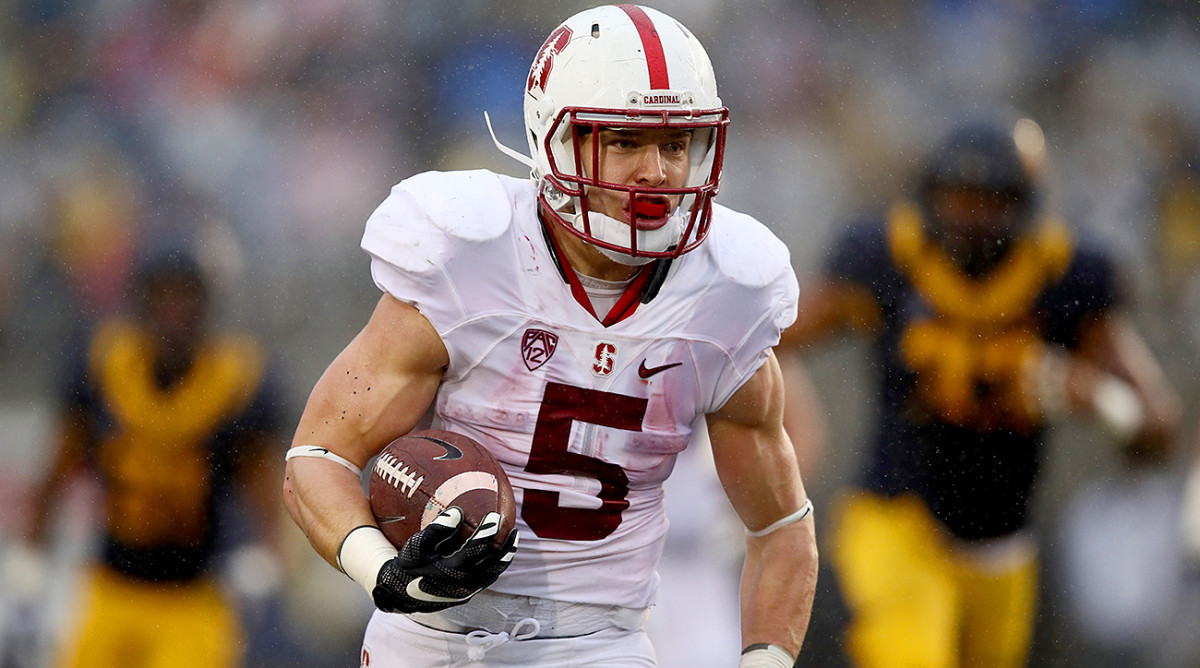
19. Christian McCaffrey, RB (Junior, Stanford)
There are special traits in McCaffrey’s game. Namely, in how he patiently sets up his blockers, then navigates through traffic with his exceptional cutting ability. He’ll be a playmaker as a pass catcher, too.
20. Jabrill Peppers, S (Junior, Michigan)
There will be risk in assuming he can handle an NFL safety role, but this level of versatility does not come around often. The Peppers draft-stock roller coaster is set to tick upwards after he tests at the combine.
21. Desmond King, CB/S (Senior, Iowa)
Speed (or a relative lack thereof) is the only element that could hold him back. The thing is, his ball skills are through the roof. Be it in the slot, outside or at safety, that know-how won’t change.
22. Takkarist McKinley, Edge (Senior, UCLA)
His motor is ... well, imagine turning off the “fatigue” slider on a video game. He cranks it up and never stops. That’s problematic for OTs, because McKinley also brings balance and speed off the edge.
23. Marlon Humphrey, CB (RS Sophomore, Alabama)
There are moments when Humphrey looks as good, or better, than any corner in this class. If he can harness those and eliminate his issue—occasionally giving up big plays—his size and speed can make him a No. 1 cornerback.
Re-picking Round 1 of the 2016 NFL draft
1. Rams select Dak Prescott, QB, Mississippi State (Actual Pick: Jared Goff, QB)
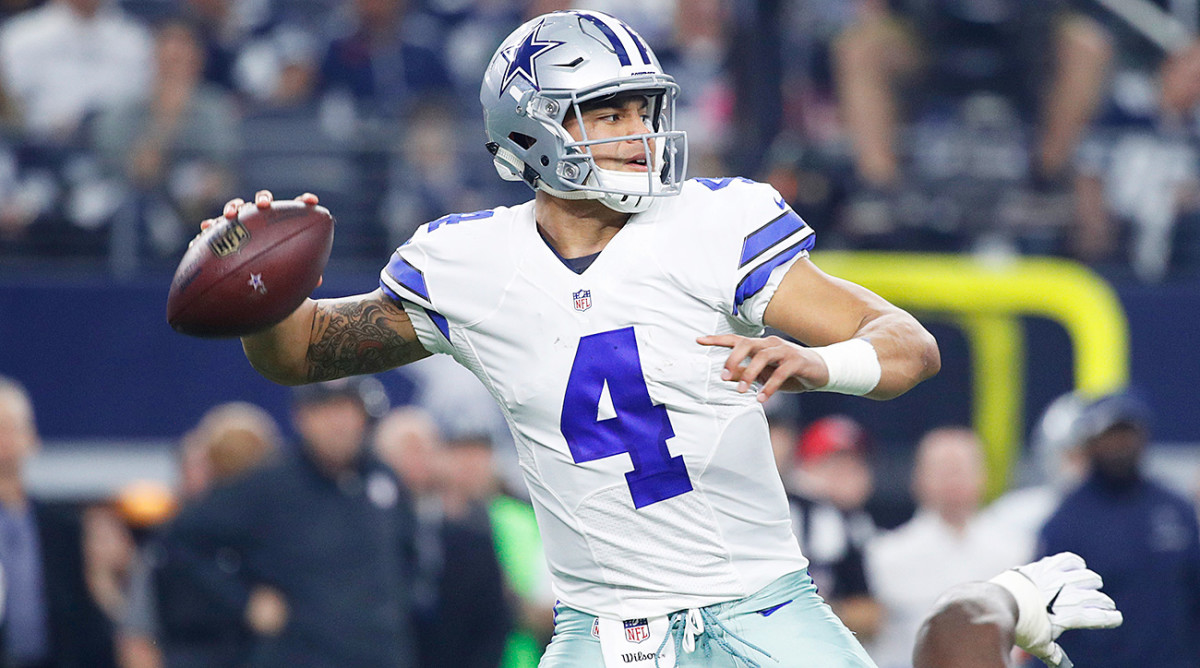
This spot went to Carson Wentz at the season’s midpoint, but the stretch run revealed Prescott’s polish and Wentz’s inconsistencies. Plug in the Offensive Rookie of the Year next to Todd Gurley (who won the award in 2015) and Sean McVay gets to open his Los Angeles coaching tenure at the helm of a dynamic backfield without writing off another season in the name of Goff’s NFL acclimation process.
2. Eagles select Carson Wentz, QB, North Dakota State (Actual Pick: Wentz)
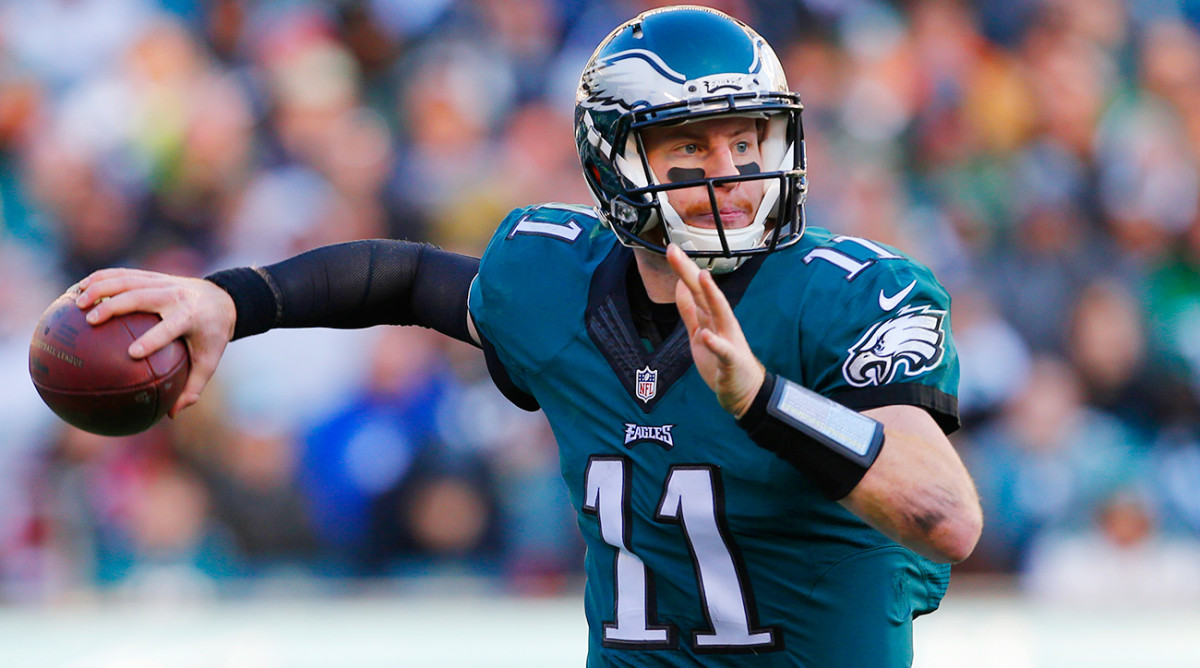
He made more mistakes as teams figured him out, but Wentz appears to be the franchise QB the Eagles were looking for when they forked over five picks to the Browns to move up to this spot last spring. The early-season concerns about throwing the FCS star into the fire were unsubstantiated—Philly clearly knew he had the makeup to learn some hard lessons on the fly without falling apart.
3. Chargers select Joey Bosa, Edge, Ohio State (Actual Pick: Bosa)
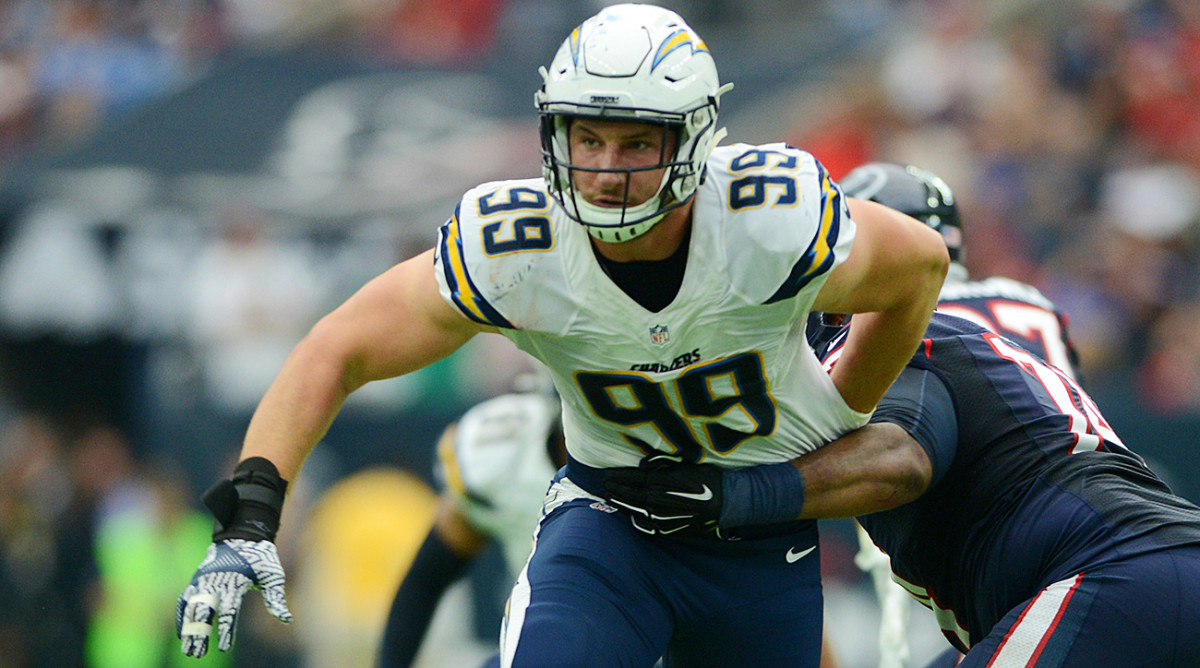
Once he got his rookie season rolling after a prolonged holdout over his rookie contract, Bosa changed the complexion of San Diego’s entire defense, racking up 10.5 sacks in just 12 games and playing with the relentless motor of a guy trying to prove his worth on every snap. In the wake of Melvin Gordon’s bounceback campaign, there’s no need for L.A. to covet any of this draft’s splashier top-five picks. Speaking of which...
4. Cowboys select Ezekiel Elliott, RB, Ohio State (Actual Pick: Elliott)
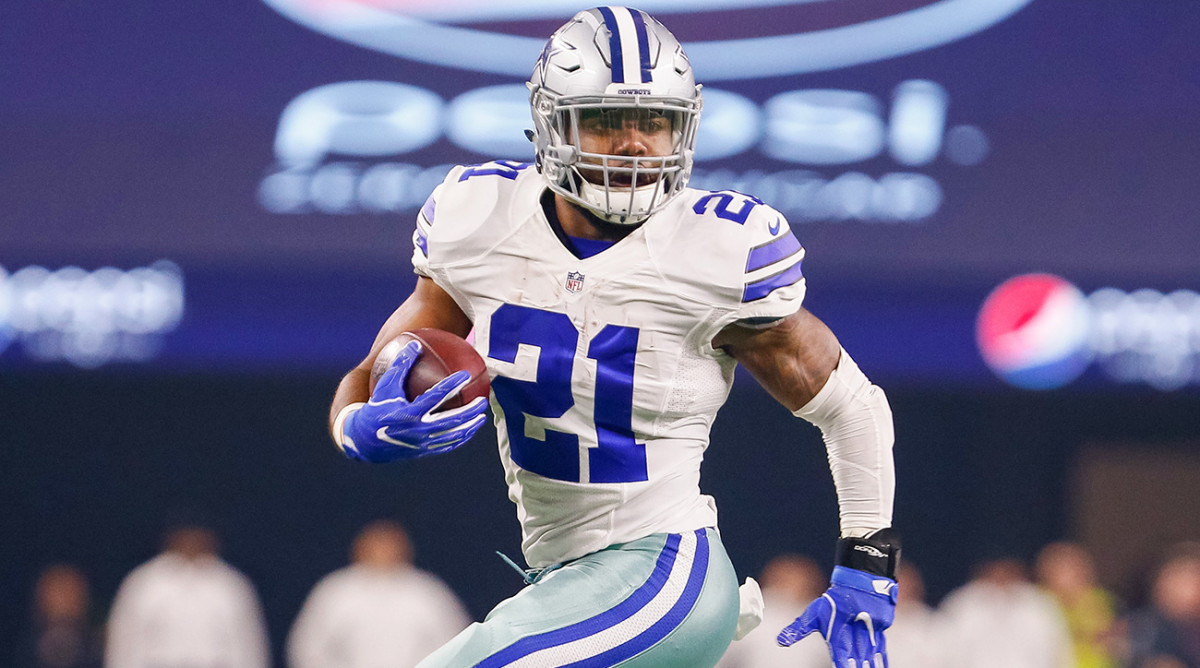
This is a no-brainer for Jerry Jones & Co. As a rookie, Elliott instantly became the centerpiece of the regular season’s best team, and Dallas has given him the supporting personnel to chase every franchise and league record he can name.
5. Jaguars select Jalen Ramsey, DB, Florida State (Actual Pick: Ramsey)
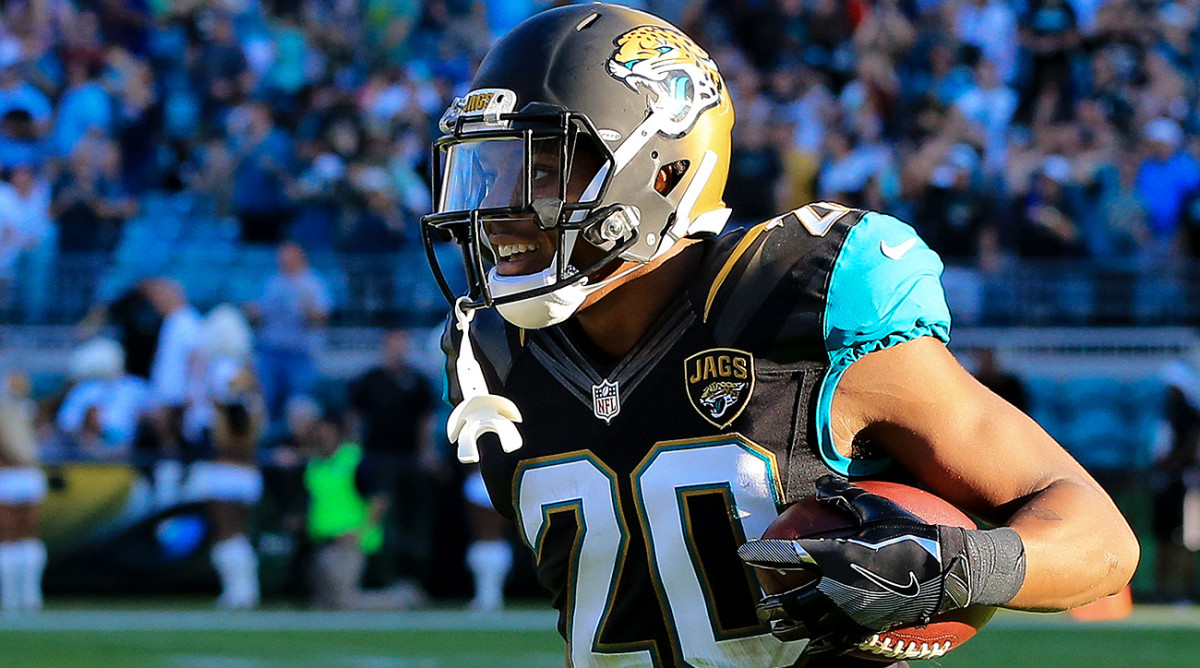
Yes, yet another team sticking with its top-five pick. Ramsey wore the frustrations of Jacksonville’s flop of a 2016 campaign on his sleeve, but he also went toe-to-toe with DeAndre Hopkins, Amari Cooper and other elite wideouts from the jump and more than held his own. There’s emotional and technical growth ahead, but the Jags appear to have a shutdown corner in the making.
6. Ravens select Jack Conklin, OT, Michigan State (Actual Pick: Ronnie Stanley, OT)
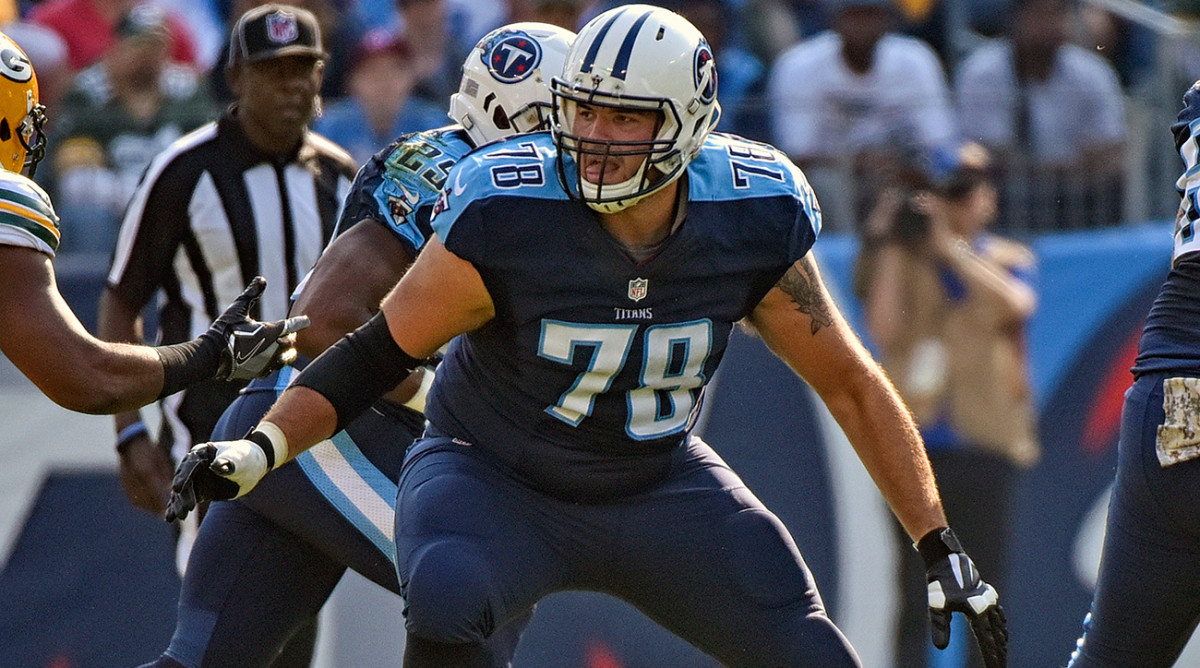
Stanley put together a perfectly fine, if injury-shortened, rookie campaign in Baltimore, but he did not earn All-Pro honors like Conklin did on the right side of Tennessee’s road-grading O-line. (Ezekiel Elliott and Tyreek Hill were the only other rookies to make the team.) That’s enough to vault him to the top of this year’s tackle class for now.
7. 49ers select Deion Jones, LB, LSU (Actual Pick: DeForest Buckner, DE)
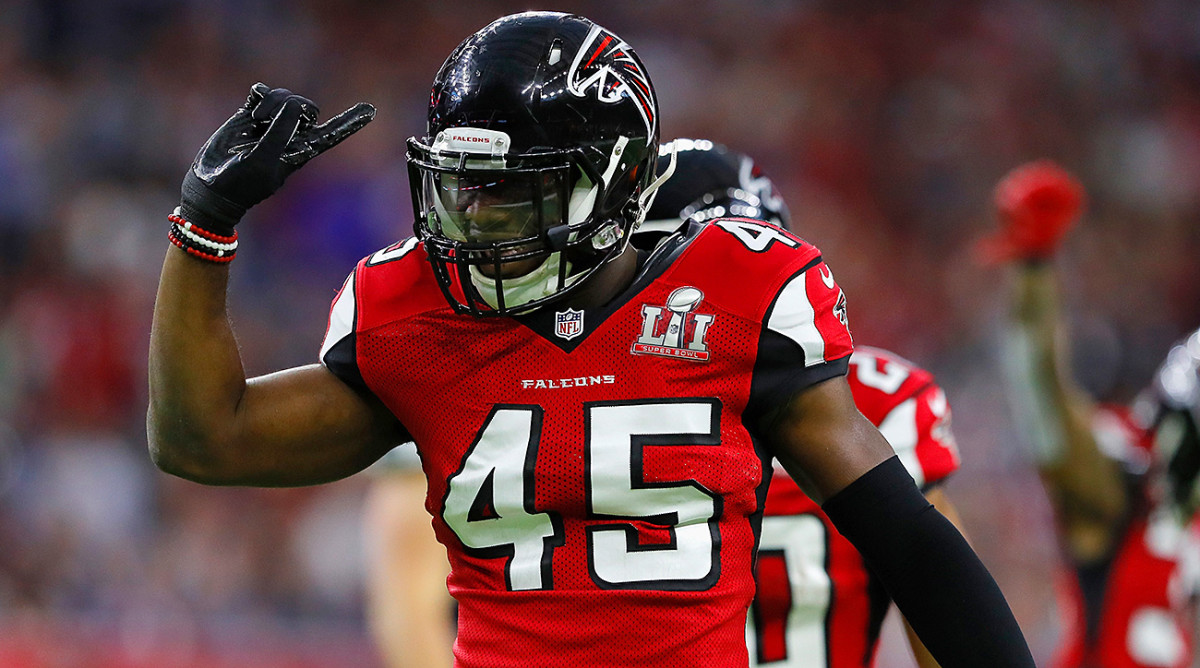
To be clear: The match here is based on Jones’s exceptional NFL debut, not anything Buckner did wrong. While the 49ers are thrilled to have a reliable end on an extremely promising growth trajectory in the real world, the quickest path to marginal improvement out of their league-worst defense is with a hyper-athletic ballhawk like Jones who has the range to seemingly cover multiple positions at the same time. His penchant for the big play forced opponents to respect the Falcons’ middle-of-the-road defense in 2016.
8. Titans select Vernon Hargreaves III, CB, Florida (Actual Pick: Jack Conklin, OT)
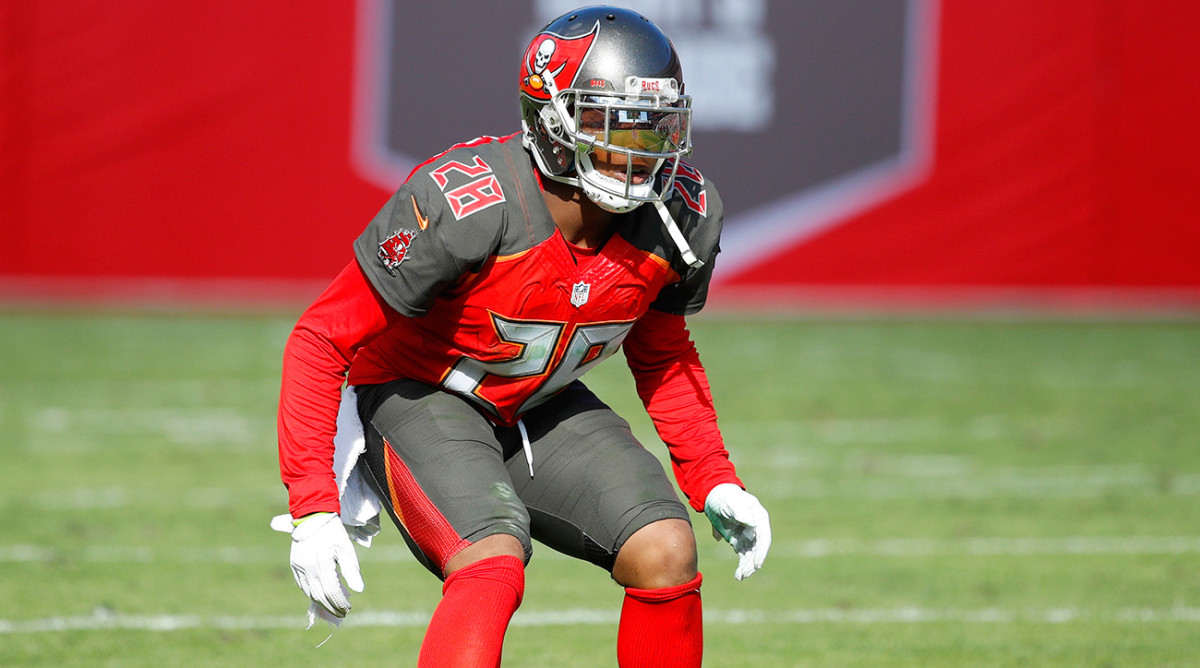
With Conklin already spoken for, Tennessee patches up its super-thin secondary with Hargreaves, who had just one interception in his rookie season but rarely looked out of his depth as a 16-game starter in Tampa Bay. Along with two draft classmates, cornerback LeShaun Sims and safety Kevin Byard, Hargreaves would be the cornerstone for the Titans’ in-progress defensive rebuild.
9. Bears select Leonard Floyd, Edge, Georgia (Actual Pick: Floyd)
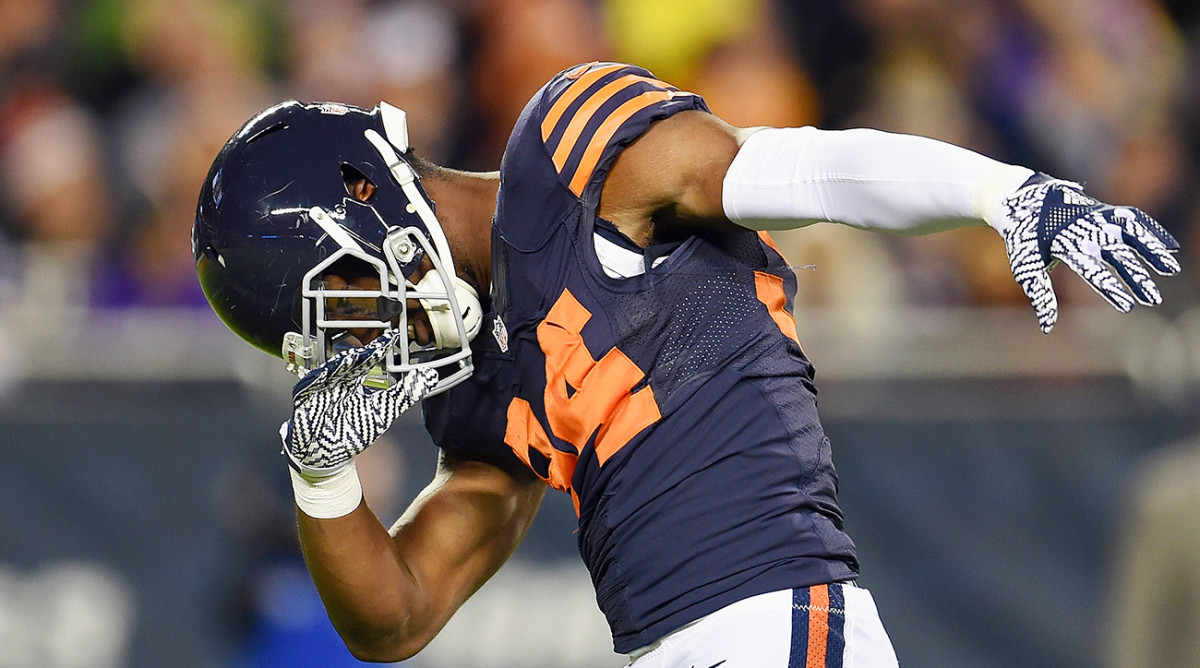
The Bears raised some eyebrows by grabbing Floyd with a pick many labeled a reach, but his seven sacks in 2016 validated GM Ryan Pace’s aggressiveness. There’s no use looking elsewhere to fill another one of the Chicago defense’s many and varied holes when Floyd has shown as much as he has so far.
10. Giants select Laremy Tunsil, OT, Ole Miss (Actual Pick: Eli Apple, CB)
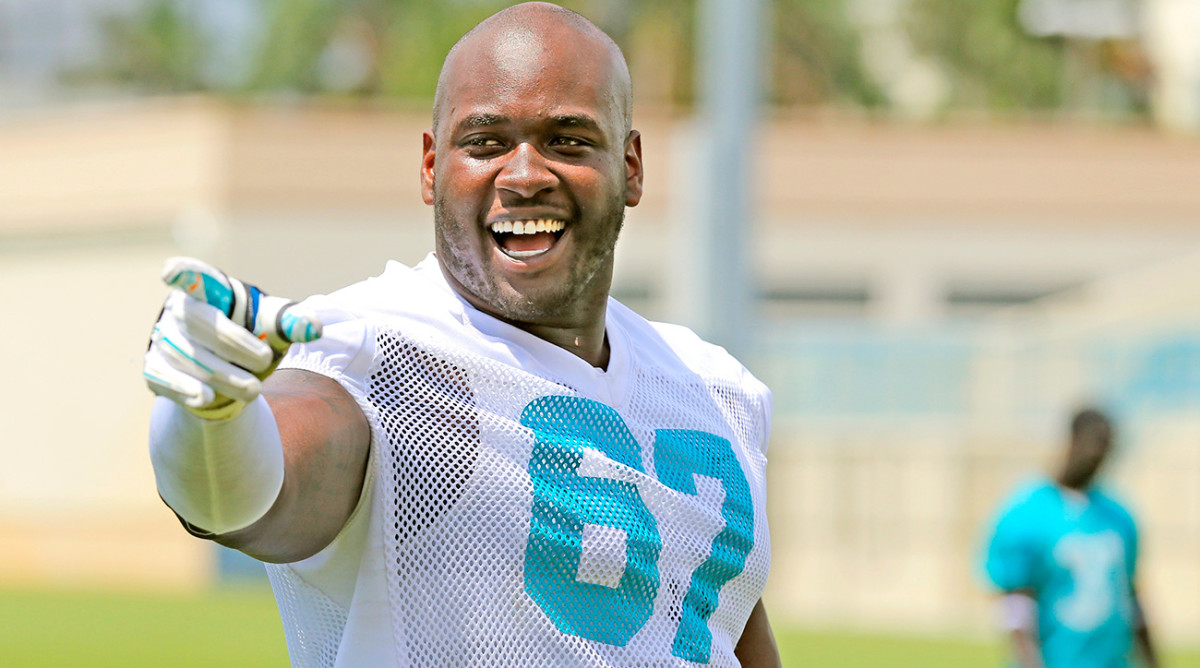
Apple might have been the best value on New York’s high-priced defense last season, but the Giants were ultimately done in by their deficient tackle play. After a season on the interior, Tunsil is ready to move outside for the Dolphins—he’d be a huge stabilizing upgrade over 2016 incumbents Ereck Flowers or Marshall Newhouse.
11. Buccaneers select Tyreek Hill, WR, West Alabama (Actual Pick: Vernon Hargreaves, CB)
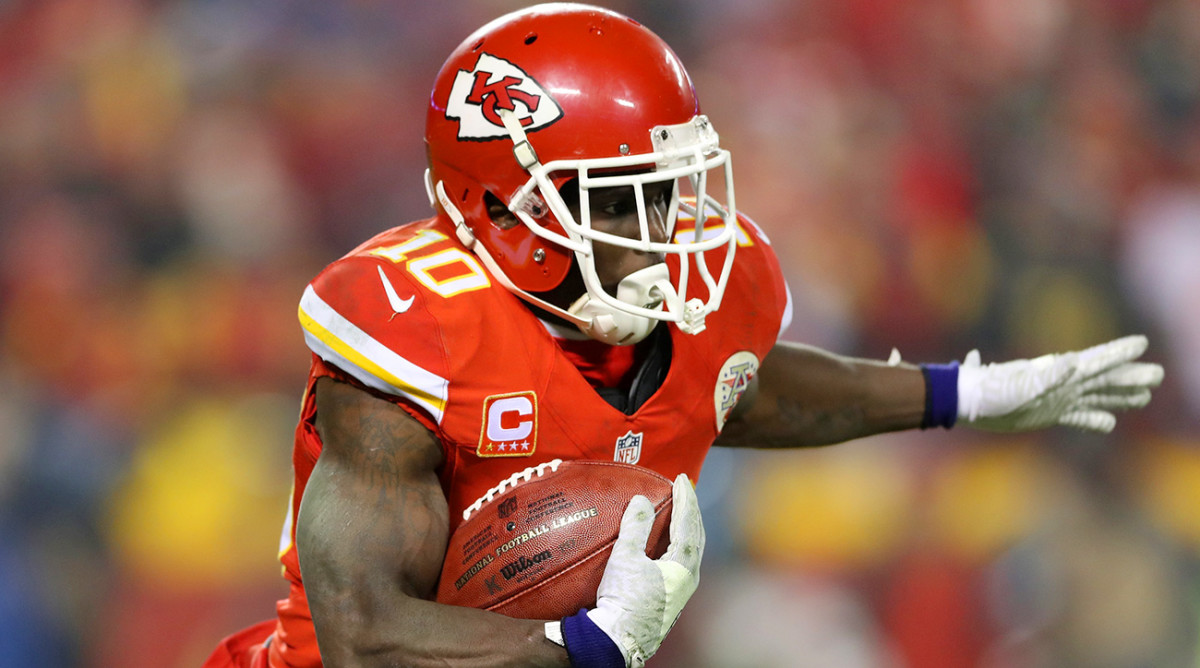
Tampa Bay needs a complementary playmaker to take some heat off Mike Evans; Hill’s speed makes defenses think twice about overloading one particular side of the field. The grisly 2014 domestic violence incident that dropped Hill to Kansas City in the fifth round won’t hurt him in this re-draft, where a season of good behavior at the professional level and a stockpile of eye-popping highlights land him just outside the top 10.
12. Saints select DeForest Buckner, DE, Oregon (Actual Pick: Sheldon Rankins, DT)
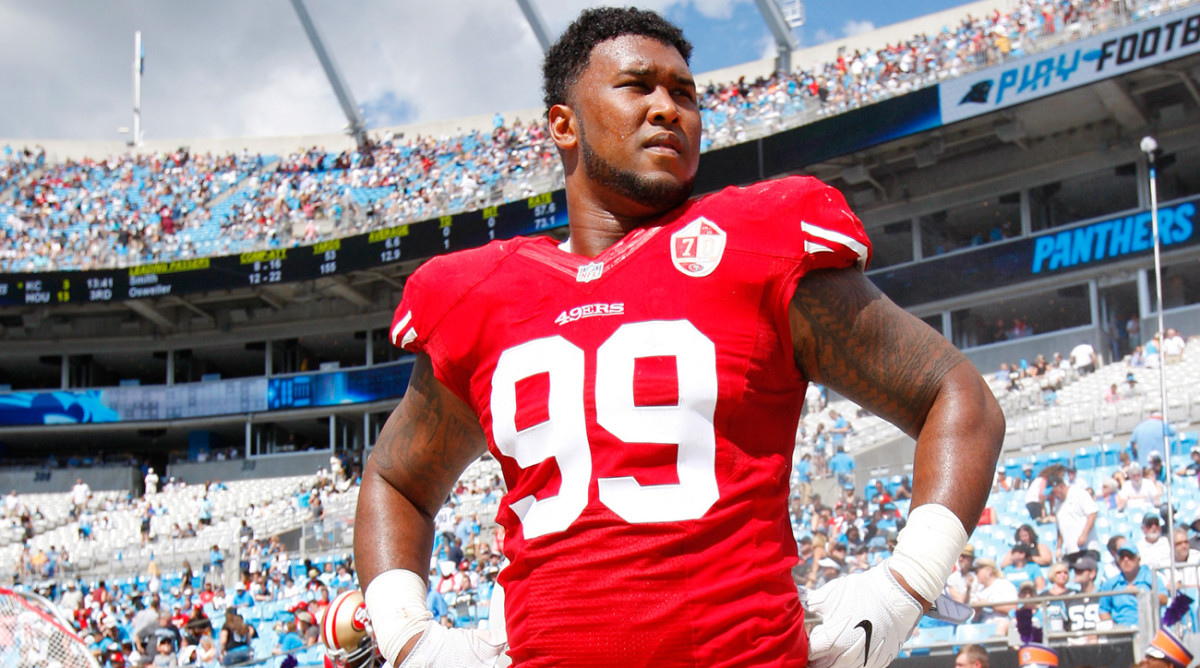
New Orleans will jump at the chance to take the best defensive lineman available. Rankins won’t last long—he racked up four sacks down the stretch after opening the season on IR—but Buckner’s durability in 2016 gives him a slight edge.
13. Dolphins select Eli Apple, CB, Ohio State (Actual Pick: Laremy Tunsil, OT)
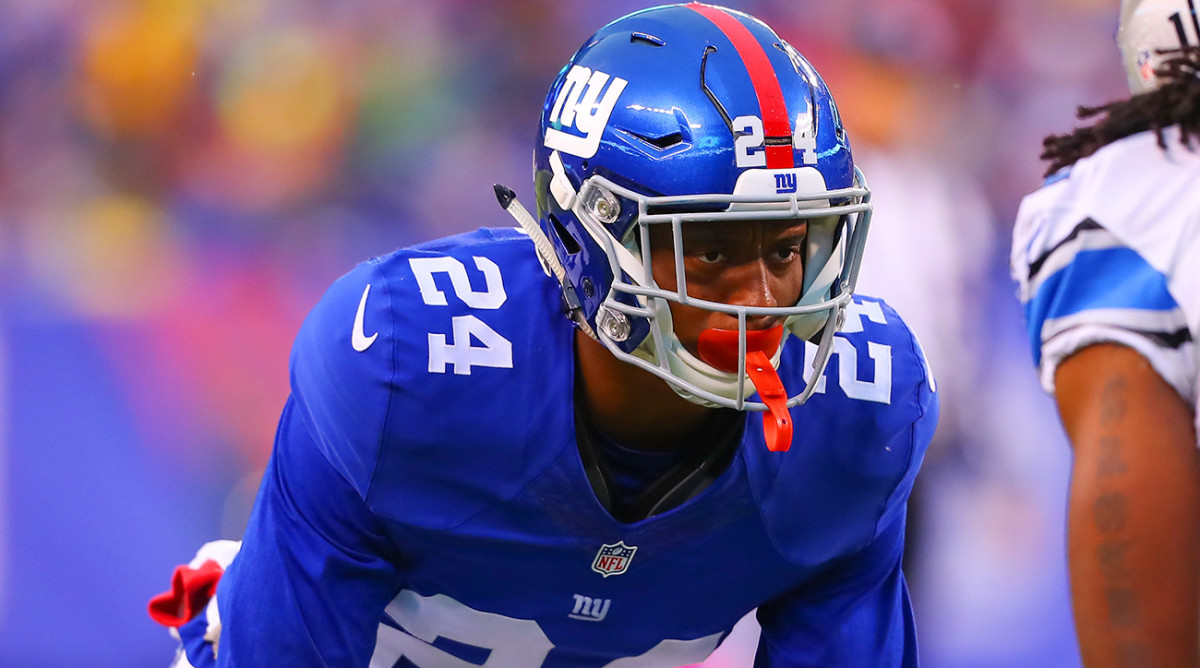
With Tunsil off the board, Miami prioritizes a secondary that limped to the finish line in 2016. Apple battled a few minor injuries but flashed his versatility at full strength.
14. Raiders select Sheldon Rankins, DT, Louisville (Actual Pick: Karl Joseph, S)
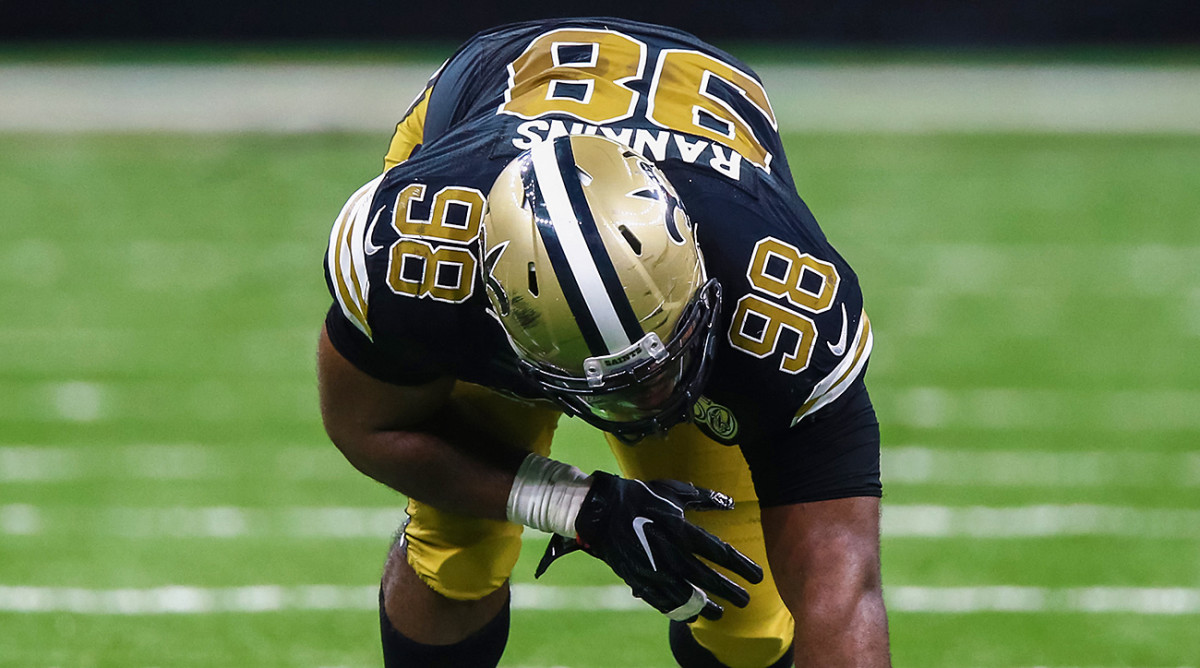
How could a unit led by Defensive Player of the Year Khalil Mack finish last in the NFL in sacks with just 25? For all their splashy moves last spring, the Raiders didn’t have enough pieces in the front seven that forced opponents to divert their attention from Mack, and it didn’t help matters that they also struggled to stop the run. Rankins could help make strides in both areas right away.
15. Browns select Chris Jones, DT, Mississippi State (Actual Pick: Corey Coleman, WR)
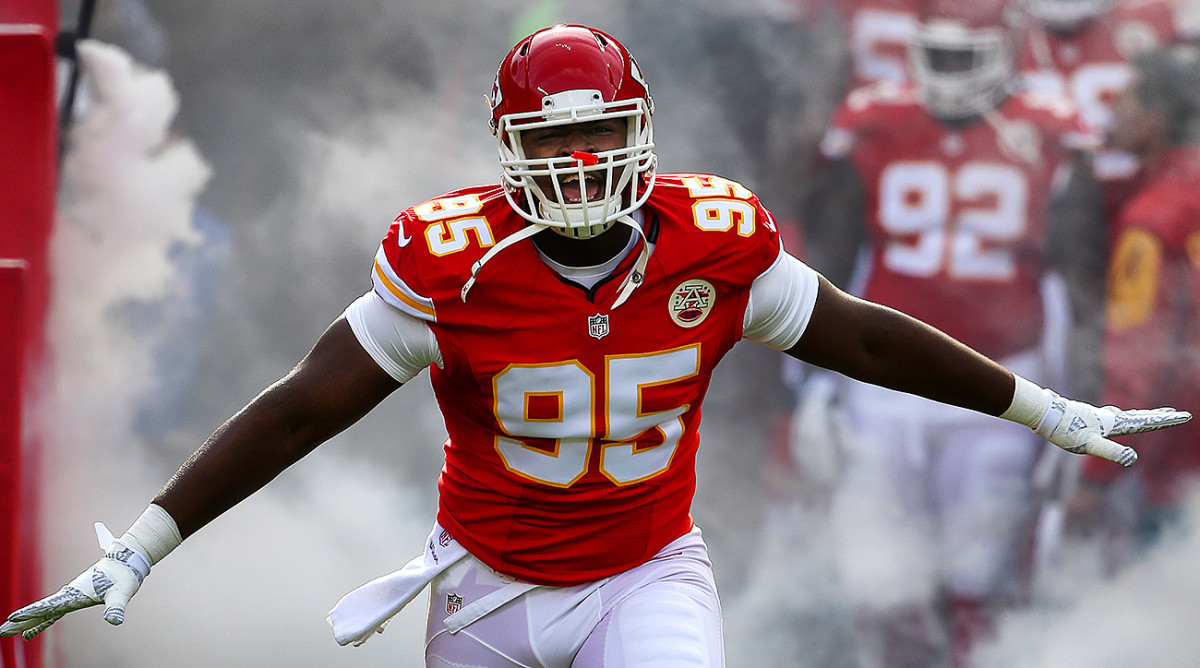
Cleveland’s decision to hoard receiver prospects is as much of a head-scratcher now as it was at the time—Terrelle Pryor broke onto the scene before Coleman or any of the team’s four WR selections could get their rookie seasons off the ground. The Browns’ off-season priorities begin with keeping Pryor in the fold and making the defense tougher everywhere, and Jones shined as injuries mounted around him in Kansas City’s front seven.
16. Lions select Karl Joseph, S, West Virginia (Actual Pick: Taylor Decker, OT)
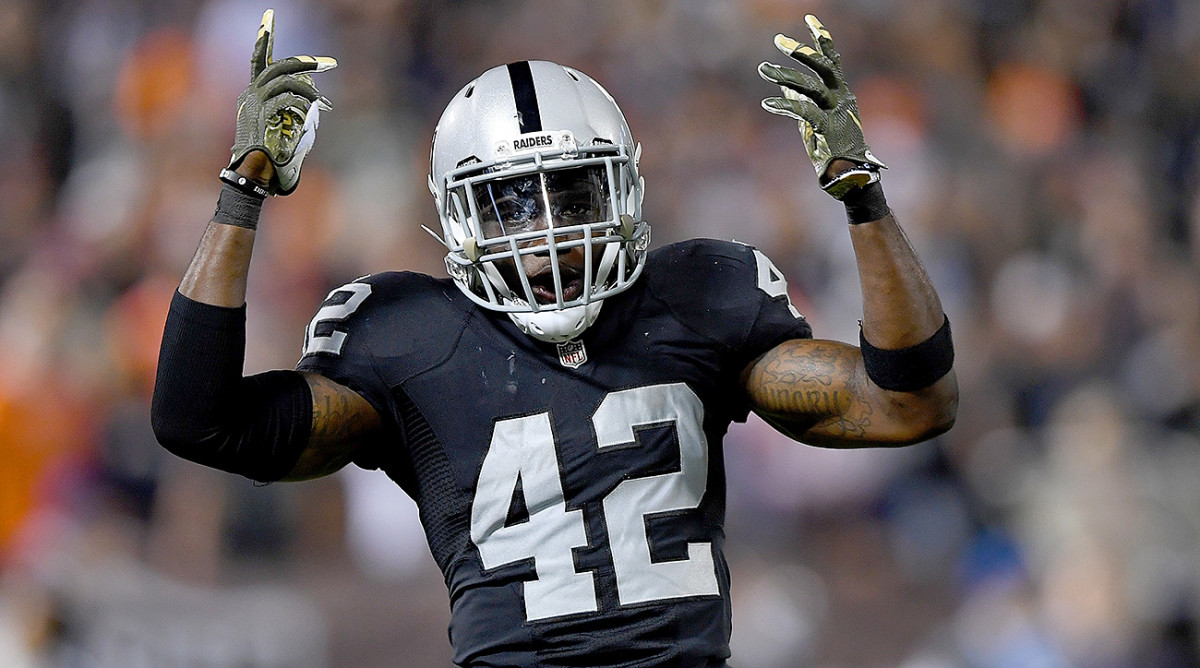
Joseph would serve the dual roles of flying around the secondary to assist the Detroit DBs around emergent star Darius Slay and bringing the wood in run defense to back up an undermanned linebacking corps. He hits with a complete disregard for his own well-being, and the Lions could use that kind of flair at the second level.
17. Falcons select Keanu Neal, S, Florida (Actual Pick: Neal)
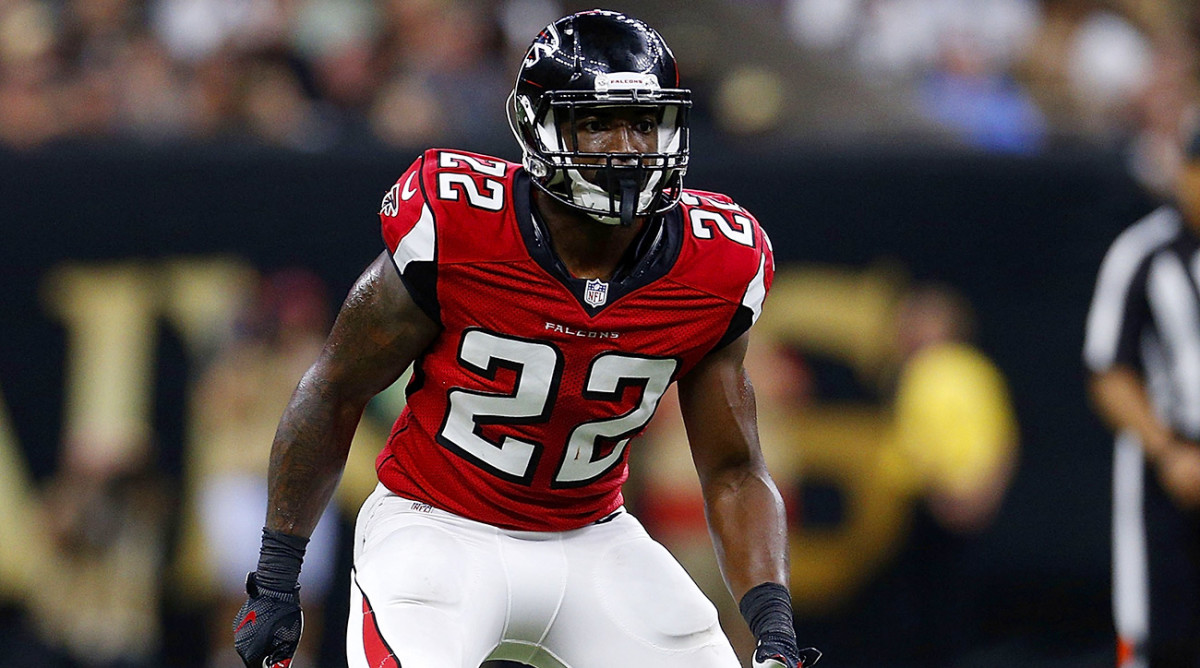
The Falcons’ 2016 draft went a long way towards turning them into Super Bowl LI runners-up. With Deion Jones long gone, there’s no shame in sticking with Neal, whom many (SI included) considered a reach at this spot at the time. The hard-hitting Florida product was asked to grow up fast in Atlanta’s young secondary, and he was the leading tackler in Super Bowl LI.
18. Colts select Ryan Kelly, C, Alabama (Actual Pick: Kelly)
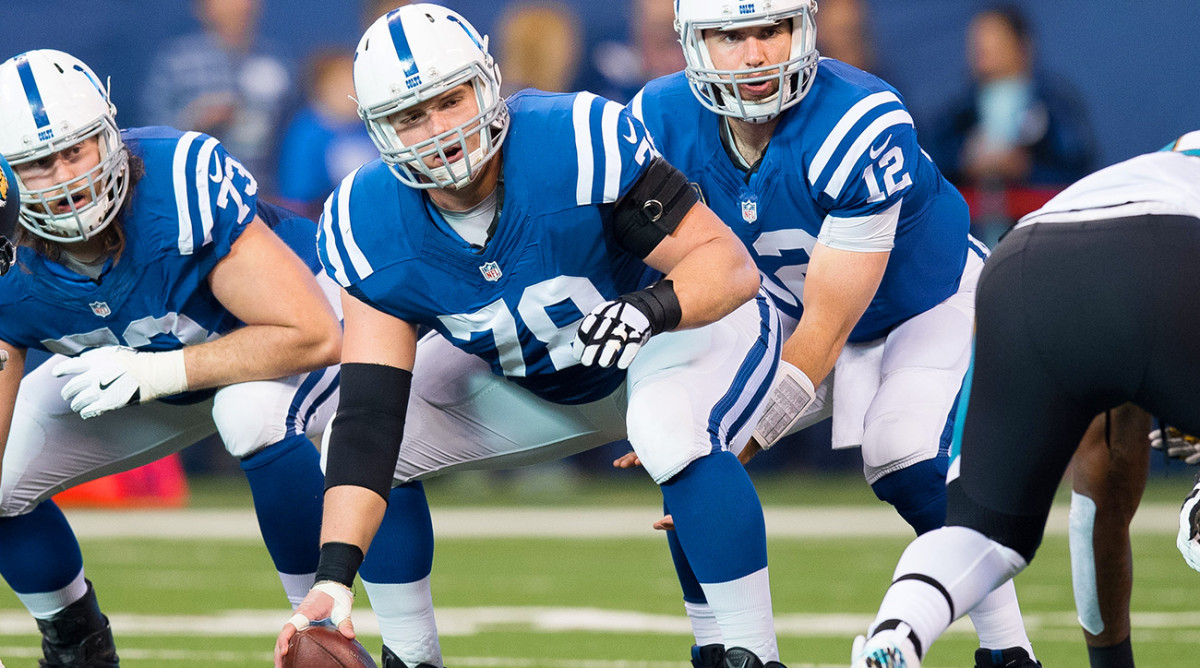
Indianapolis can’t afford to throw away reliable linemen once they finally find their way onto the roster. The Colts should try to keep Kelly in town as long they have Andrew Luck under center.
19. Bills select Emmanuel Ogbah, DE, Oklahoma State (Actual Pick: Shaq Lawson, DE)
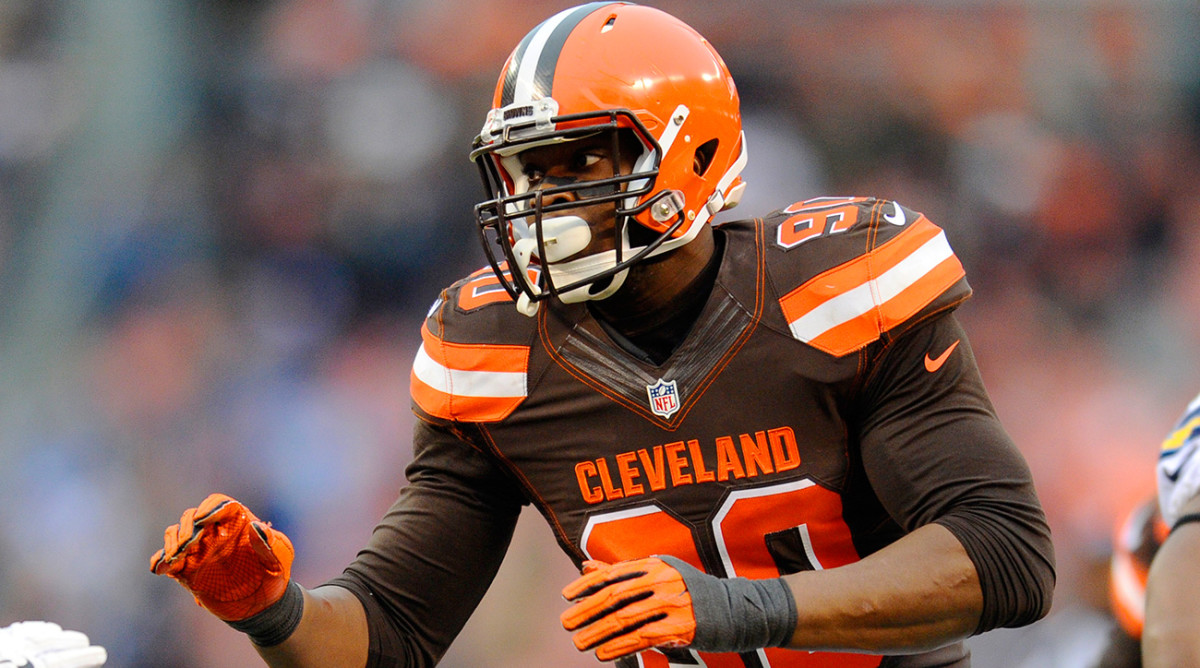
Ogbah made the kind of impact that the Bills were hoping for out of Lawson, who was limited to just one start all season after summer shoulder surgery put his debut on hold. Only four rookies had more sacks last year than Ogbah’s 5.5 off the edge.
20. Jets select Michael Thomas, WR, Ohio State (Actual Pick: Darron Lee, LB)
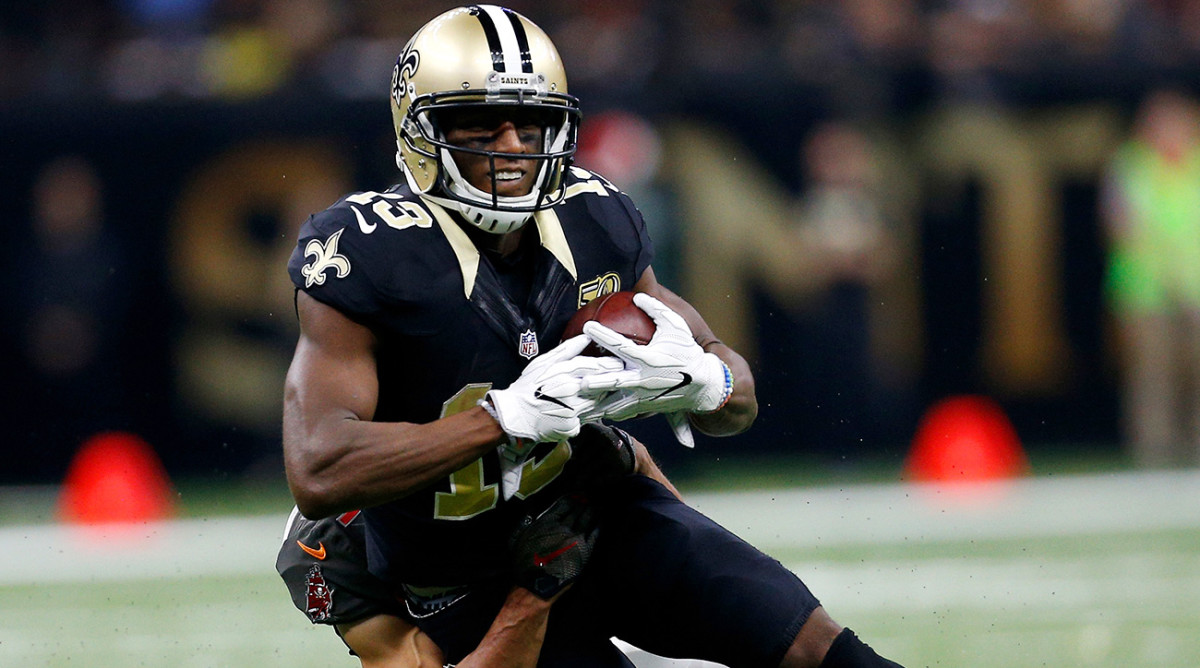
The fact that Thomas and Tyreek Hill are the two top-20 representatives of the 2016 WR class tells you all you need to know about the unpredictability that position’s rookies endured this year. (Heck, Super Bowl X-factor Malcolm Mitchell couldn’t crack this list.) Thomas looks like a budding star in the Saints’ pass-happy offense, and he could step in as either a lethal complement or an eventual replacement for Brandon Marshall.
21. Texans select Paxton Lynch, QB, Memphis (Actual Pick: Will Fuller, WR)
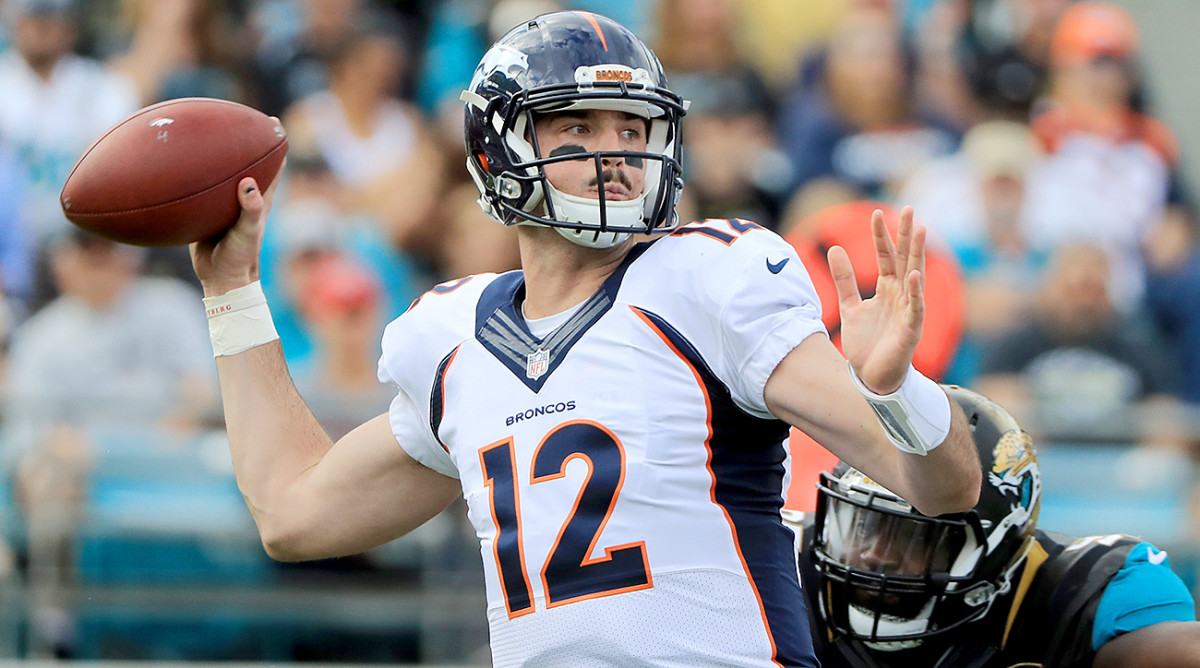
Who’s ready for the tallest quarterback controversy of all time? Houston doesn’t have to cut bait on Brock Osweiler completely after one nightmare season, but if he proves to be unsalvageable, Lynch held his own in a pair of unexpected October starts for the Broncos and seemed to be quick in picking up the secrets of playing winning football with an elite defense at one’s back.
22. Redskins select Corey Coleman, WR, Baylor (Actual Pick: Josh Doctson, WR)
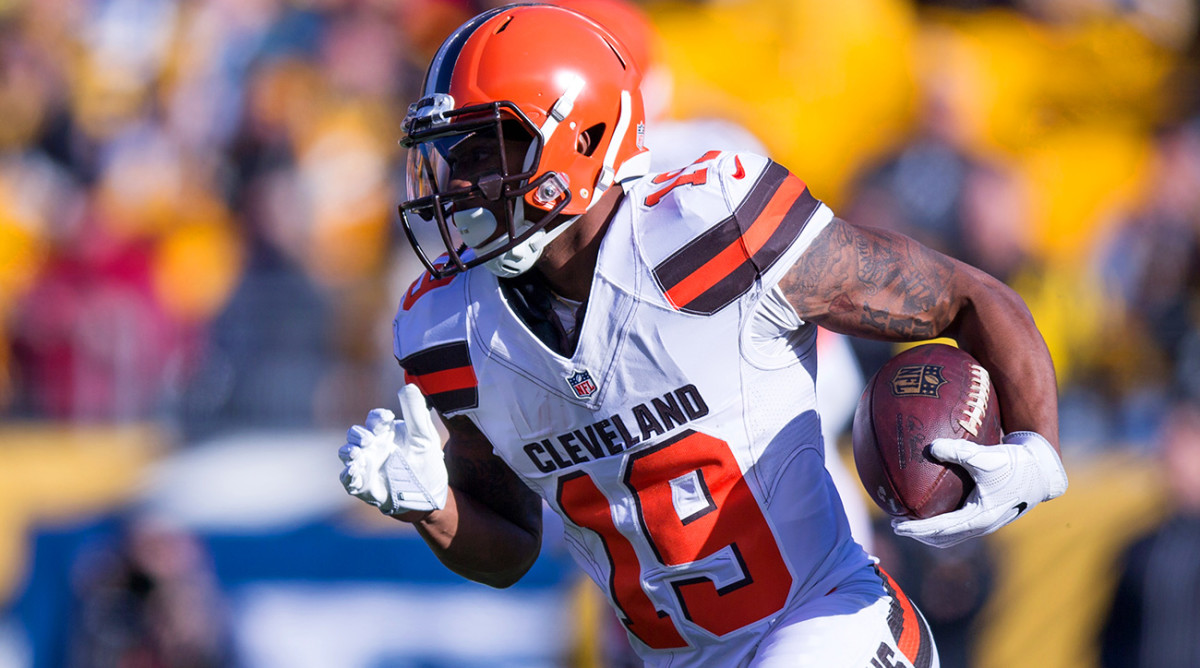
Both rookie receivers dealt with injuries in 2016—Coleman with a broken hand that cost him six games, Doctson with an Achilles injury that sidelined him for good in Week 3. The Browns’ first-round pick heads to D.C. because he was healthy enough to prove he can get separation from NFL coverage downfield despite his small stature.
23. Vikings select Taylor Decker, OT, Ohio State (Actual Pick: Laquon Treadwell, WR)
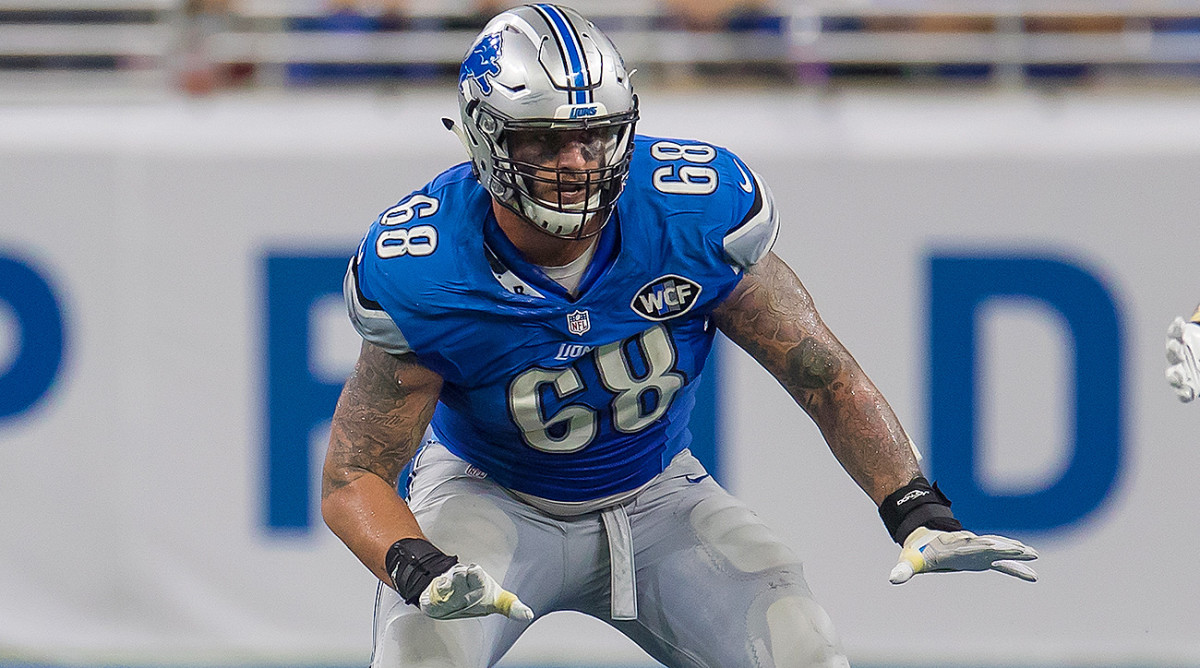
The Vikings are out of excuses for their offensive line, which has put Sam Bradford and Teddy Bridgewater in peril time after time. Minnesota hasn’t taken a lineman in the first two days of the draft since Matt Kalil was selected fourth in 2012, so it’s time to get proactive, especially as Kalil prepares to test free agency.
24. Bengals select Cody Whitehair, C, Kansas State (Actual Pick: William Jackson III, CB)
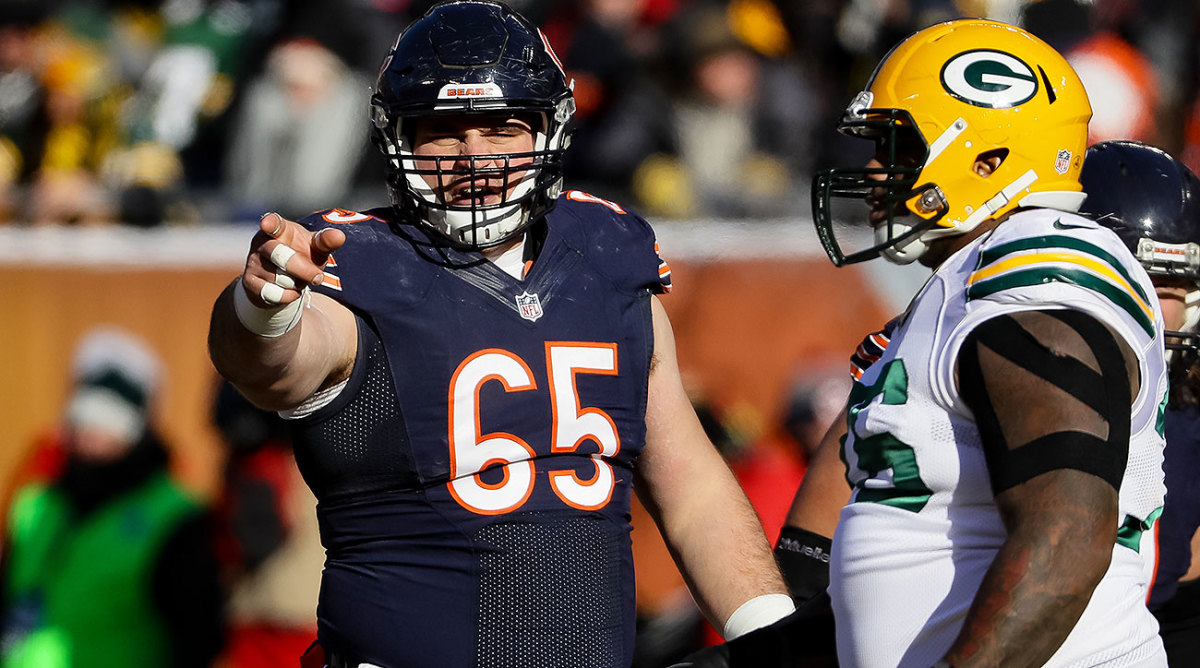
Whitehair finished with Pro Football Focus’s third-highest graded season ever by a rookie center. Wherever he fits in Cincinnati’s line, the Kansas State product can help soften the impending loss of top free agent guard Kevin Zeitler.
25. Steelers select Artie Burns, CB, Miami (Actual Pick: Burns)
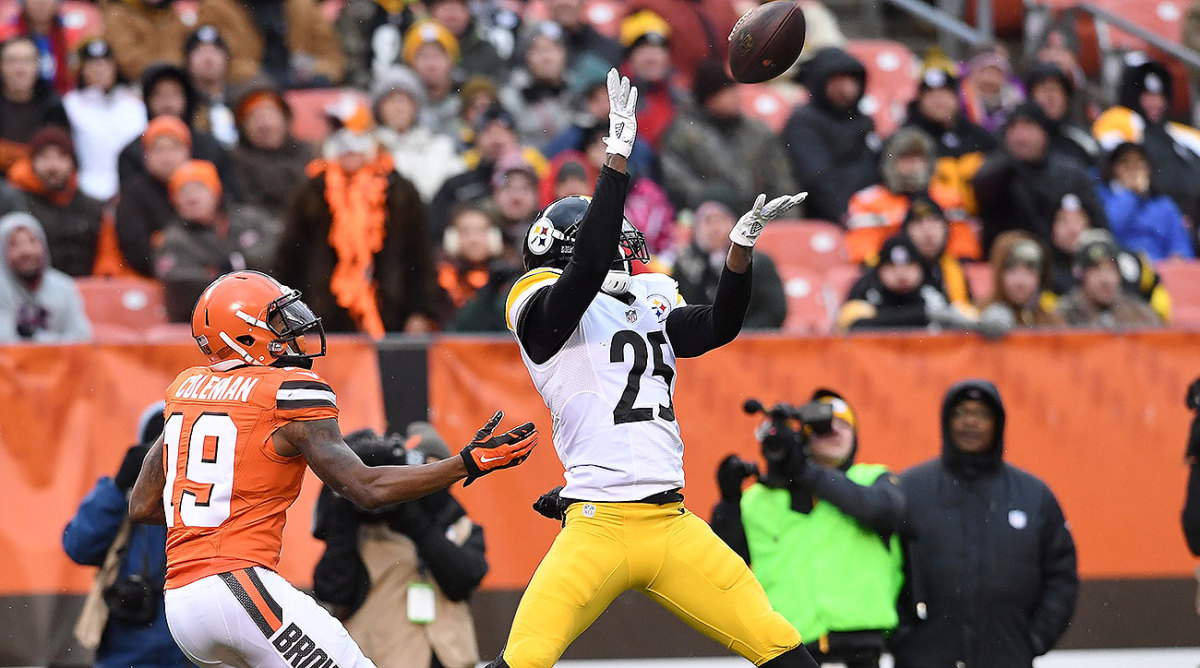
Only Jalen Ramsey earned a higher grade from PFF among 2016’s rookie DBs than Burns, who cemented a starting job down the stretch. He and effective second-round safety Sean Davis are set up to eventually run the show in the Pittsburgh secondary.
26. Broncos select Joe Thuney, OG, NC State (Actual Pick: Paxton Lynch, QB)
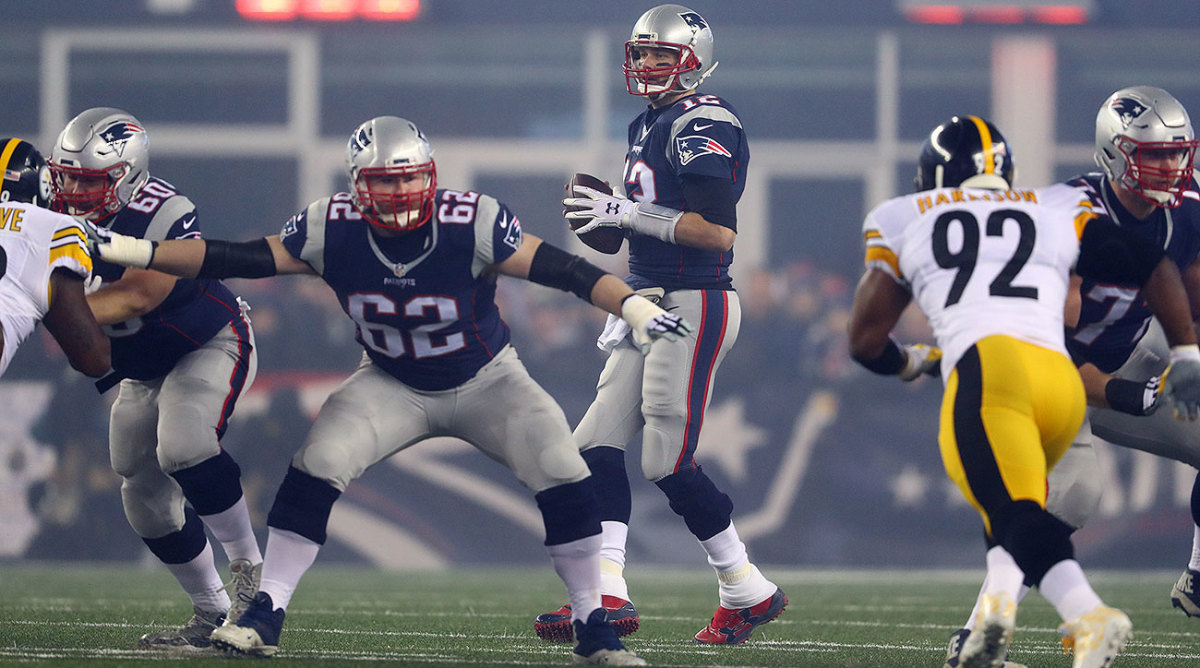
Until the Broncos land upon their next franchise quarterback, Denver’s ground game can’t run hot and cold as it did in 2016. No matter what the starting five up front looks like after the dust settles on free agency and the draft this spring, Thuney would have a job.
27. Packers select Jordan Howard, RB, Indiana (Actual Pick: Kenny Clark, DT)
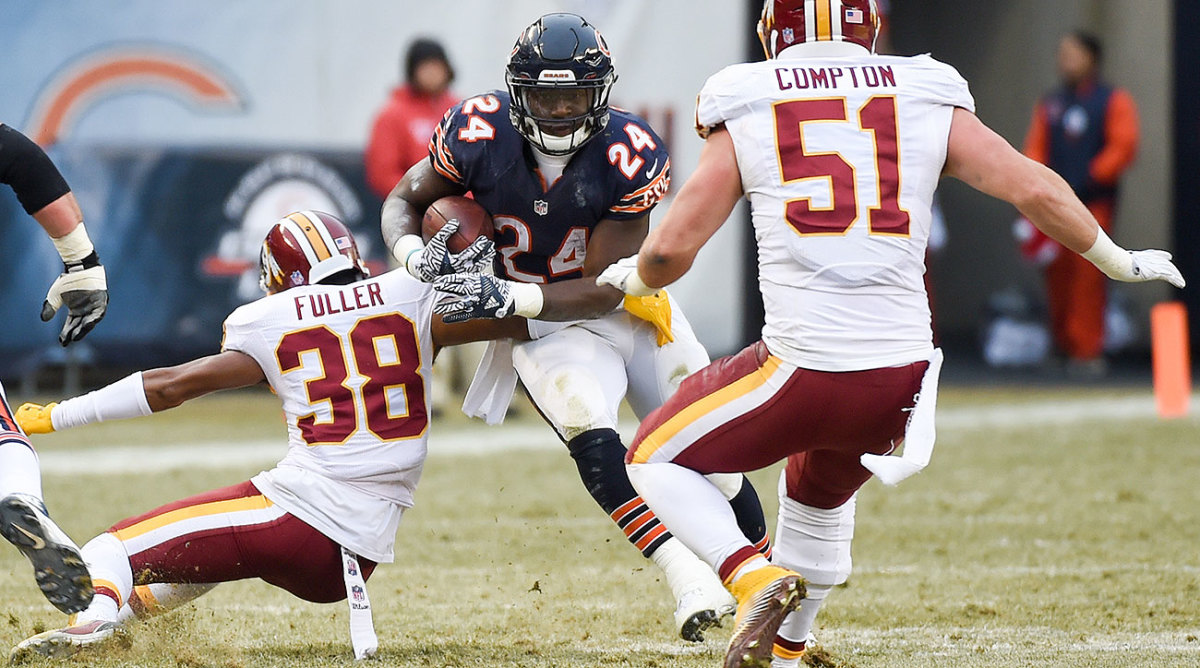
With Eddie Lacy set to hit the open market, it makes more sense for Green Bay to find his successor in the draft than it does via the checkbook. Ty Montgomery the Running Back was a revelation, but who knows whether he can hold up in that hybrid role over a 16-game slate? As fun as it was watching Aaron Rodgers piece together a lethal offense with Montgomery and Aaron Ripkowski splitting carries, Green Bay should have at least one traditional back handy. Last year’s second-leading rusher should do the trick.
28. 49ers select Su'a Cravens, S, USC (Actual Pick: Joshua Garnett, OL)
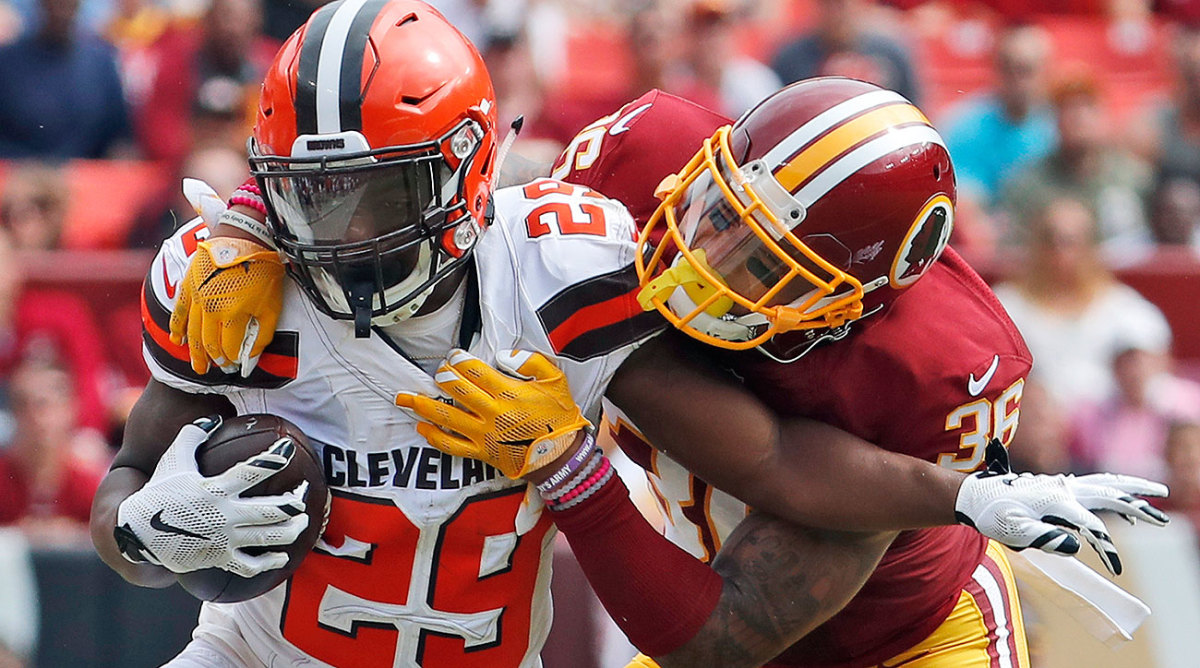
With Deion Jones already in the fold, San Francisco double-dips on defense after its trade back into the first round. Cravens had a bit of a roller-coaster 2016, missing six games with injuries and making a handful of game-turning plays in Washington, but he makes the new-look 49ers D even more flexible.
29. Cardinals select Jared Goff, QB, Cal (Actual Pick: Robert Nkemdiche, DT)
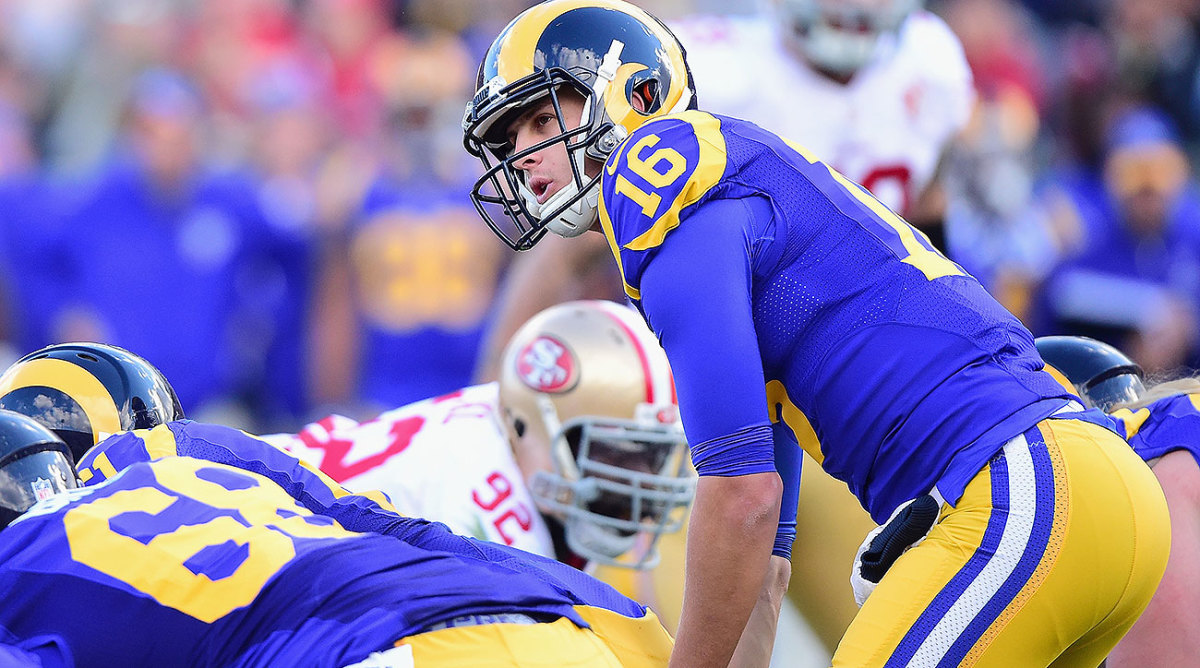
Hear me out, because this one might not be popular. Goff remains a Round 1 pick despite his disastrous debut because the curve was always going to be steep for a prospect with that much to learn and that little of a supporting cast behind him. Bruce Arians seems like the kind of coach who would say yes to Goff’s howitzer of an arm and figure out the details later, and with Carson Palmer returning for one more year, Arizona could limit the pressure to play Goff that constantly swirled in L.A.
30. Panthers select Derrick Henry, RB, Alabama (Actual Pick: Vernon Butler, DT)
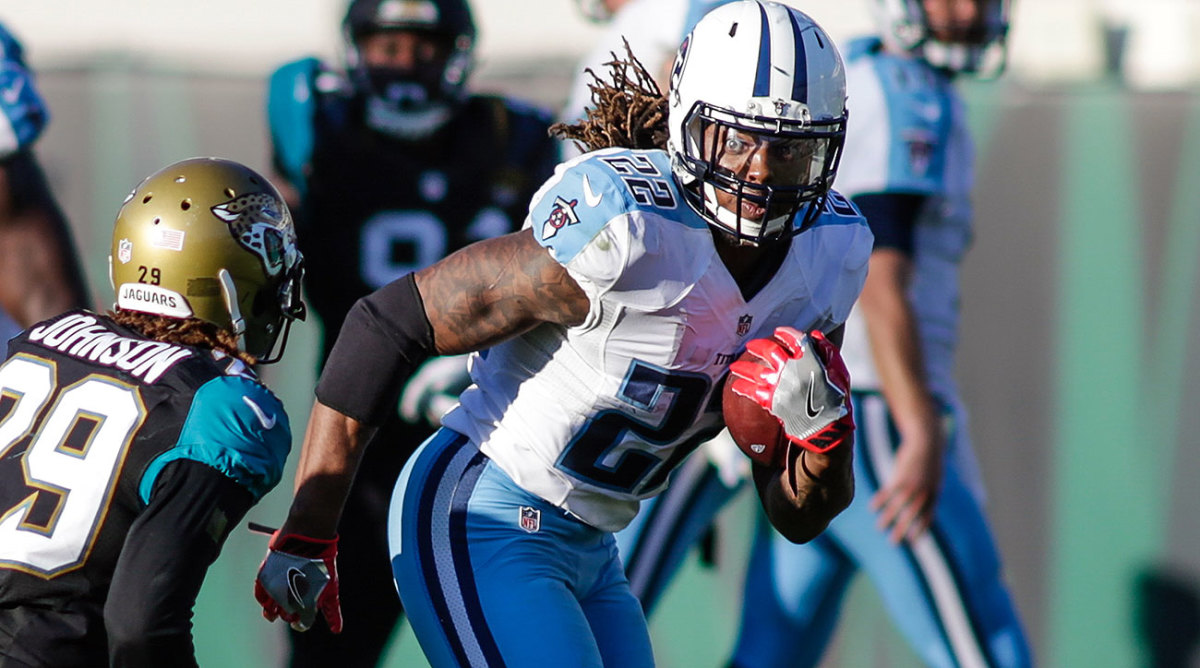
Carolina may look to the 2017 draft for a power runner that pairs well with Cam Newton, but Henry would be put to good use as a feature back. None of the three corners selected by the Panthers in later rounds are worth protecting from poachers in this do-over.
31. Seahawks select Xavien Howard, CB, Baylor (Actual Pick: Germain Ifedi, OT)
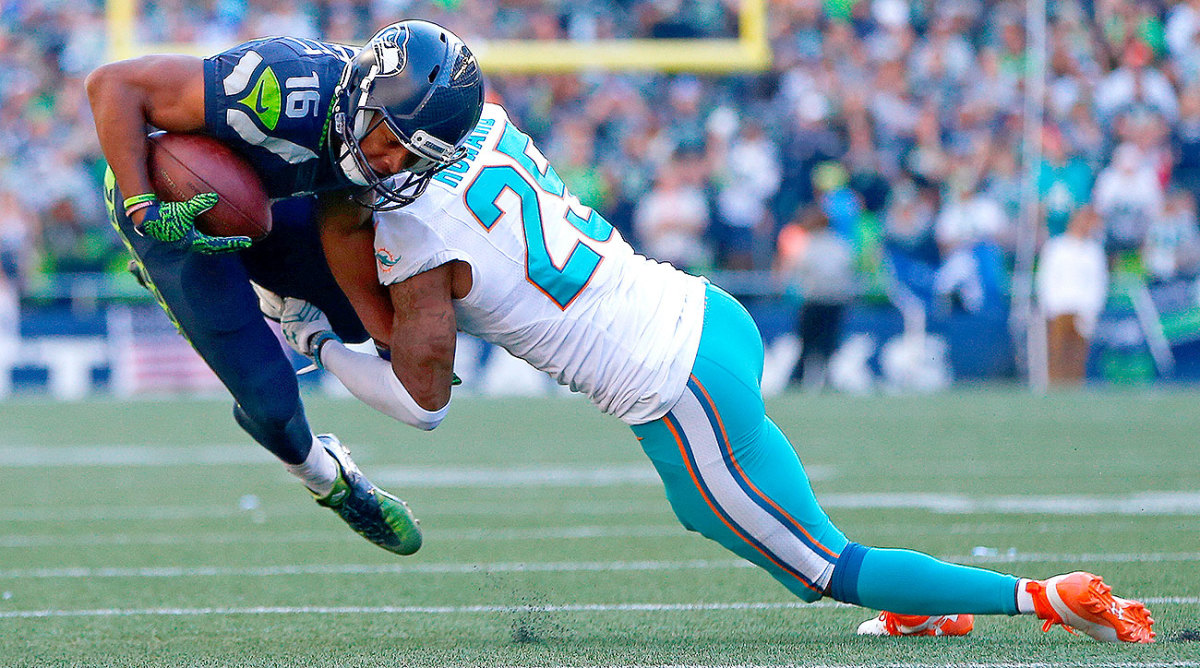
O-line remains a big need in Seattle, but if the Seahawks are committed to not committing resources to their front, let’s stay on script. DeShawn Shead tore his ACL in the playoffs, leaving snaps up for grabs in the secondary early in 2017. Howard struggled with knee troubles of his own but showed serious promise in the seven games he did get on the field for in Miami.
24. Caleb Brantley, DT (Junior, Florida)
Brantley is what teams want in an impact interior lineman—a strong, well-built defender with the burst to blow up the pocket by himself. He can bury blockers who aren’t ready to rumble.
25. Budda Baker, S (Junior, Washington)
No matter where he ends up, Baker probably will be a fan favorite—he does everything at full speed. He excels against the pass, but his smallish frame has not yet prevented him from being a force as a blitzer and run defender.
26. John Ross, WR (Junior, Washington)
Baker’s dynamic former teammate, Ross might be the top big-play threat in this draft class. He can get deep or burn defenses with his elite run-after-the-catch talent.
27. Patrick Mahomes, QB (Junior, Texas Tech)
Grip it and rip it. Mahomes can drill a ball in to all levels of the field, from the pocket or on the run, with a variety of arm angles. He’s raw with superstar upside.
28. Cam Robinson, OT (Junior, Alabama)
Go ahead and run behind Robinson—he can mash defenders at the line and get to the second level. His pass protection needs a little clean-up, but there’s enough potential for him to be seen as a left tackle.
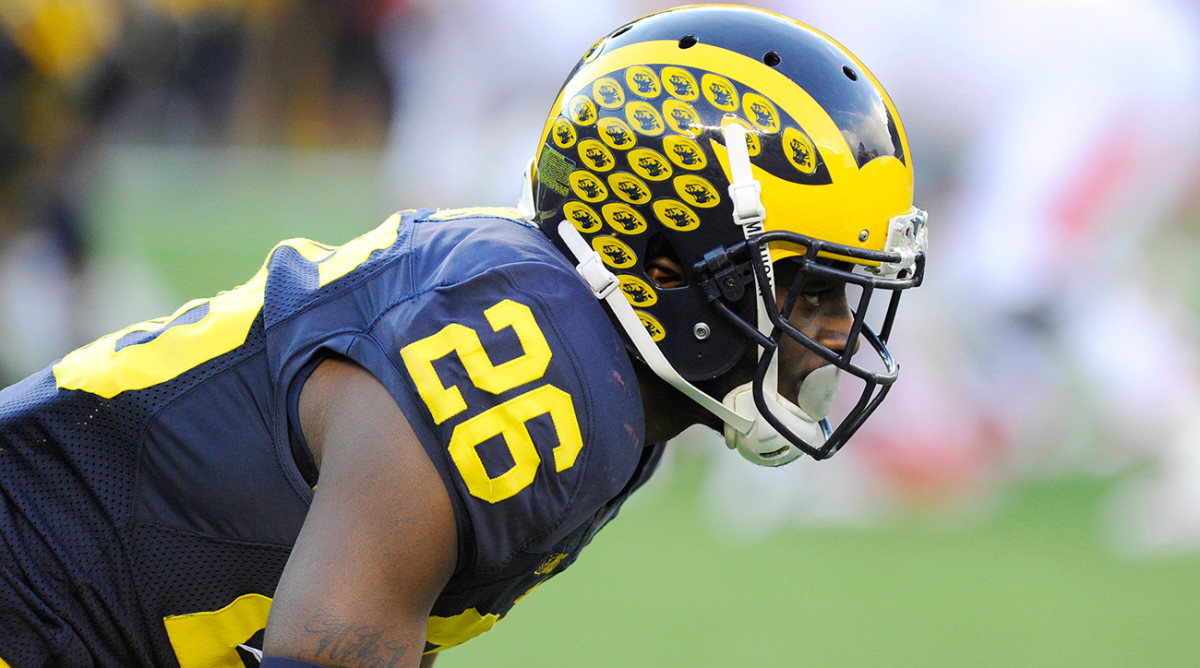
29. Jourdan Lewis, CB (Senior, Michigan)
Lewis plays a stingier press coverage than his frame might indicate. Even so, that sub-six-foot frame might push him into the slot, where he can eliminate shifty receiving threats with his footwork.
30. Jarrad Davis, LB (Senior, Florida)
Davis is a linebacker who’s built to succeed in the modern NFL, because he’s quick enough to stick with running backs but physical enough to body tight ends. He’s reportedly going to skip drills at the combine, due to an ankle injury that nagged him during the season.
31. Charles Harris, Edge (Junior, Missouri)
A very fluid edge rusher, who looks like a 3–4 OLB but also could be a fit as a 4–3 DE. Harris sets up blockers well, and he’s borderline unstoppable when he goes to his spin move.
32. Zach Cunningham, LB (Junior, Vanderbilt)
He might not finish every play, but he’ll get to the ball carrier. (And he did have 125 tackles last season.) Give him a little space and turn him loose.
25 Players Who Could Get Even Richer in Free Agency
33. Jalen Tabor, CB (Junior, Florida)
Tabor might be at his best after the ball leaves the QB’s hand—he eats up ground in a hurry, then finds the football. He’s more technique and athleticism than physicality.
34. DeShone Kizer, QB (Junior, Notre Dame)
The concern is that Notre Dame’s 2016 season broke him, to some extent. He was skittish and error-prone through too much of it. But at his best—like, say, during his 2015 hot streak—Kizer was a dangerous dual-threat QB, one capable of dropping passes into extremely tight windows.
35. Pat Elflein, C (Senior, Ohio State)
The draft’s top interior O-lineman. He can hold his own vs. power inside, but he’s really special when he can work out in front of a running back.
36. Jaleel Johnson, DT (Senior, Iowa)
A disruptive presence inside, Johnson works his hands with the savvy of a veteran NFL D-linemen. He makes it very tough to hold a block.
37. Evan Engram, TE (Senior, Ole Miss)
Whether you want to label him a tight end or a slot receiver, Engram is problematic for defenses. He’s athletic enough to burn linebackers but advanced enough in his understanding of routes to work open vs. DBs.
38. Ryan Ramczyk, OT (Junior, Wisconsin)
The hip surgery that will knock him out of combine drills makes this trickier than it otherwise would be, because Ramczyk is a nimble, aggressive blocker. How long until he’s 100%?
39. Haason Reddick, LB (RS Sophomore, Temple)
A Senior Bowl star, Reddick’s deep background as a running back, DB and most recently edge rusher all show up in making him a dynamic linebacking prospect.
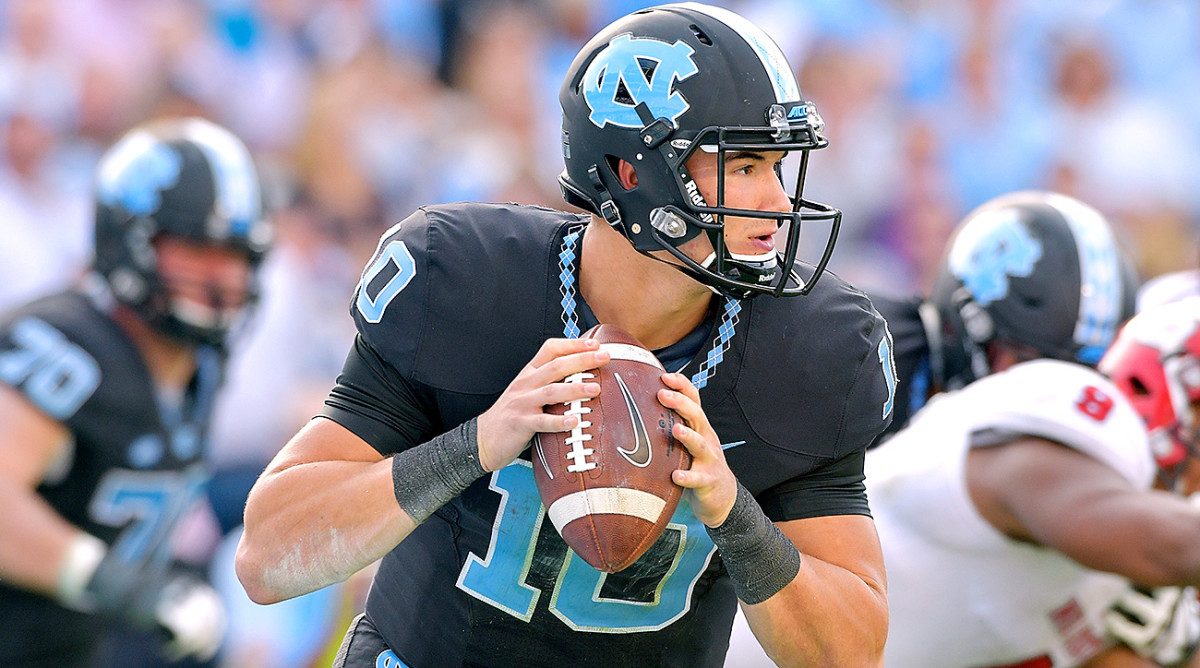
40. Mitch Trubisky, QB (Junior, North Carolina)
Trubisky might be the first QB off the board, and the traits—as a runner and passer—are intriguing. His hit-or-miss footwork and lack of experience should temper the expectations.
41. Juju Smith-Schuster, WR (Junior, USC)
He plays almost like an athletic tight end: physical, willing to block and difficult to bring down.
42. Tre'Davious White, CB (Senior, LSU)
White’s best quality is that he can run a receiver’s routes almost as well as the receiver himself. He’s all about quickness.
43. Gareon Conley, CB (Junior, Ohio State)
Conley was outstanding defending the pass in 2016, and he will fit comfortably into any coverage scheme.
• The biggest snubs of the 2017 NFL combine
44. Chris Wormley, DT (Senior, Michigan)
A 300-pounder who did a lot of work coming off the edge at Michigan—he has the power and size to be a productive three-tech.
45. David Njoku, TE (Junior, Miami)
Njoku is probably ticketed for Round 1 based on the dream of what he could become. His physical attributes are through the roof.
46. Taco Charlton, Edge (Senior, Michigan)
Granted, this ranking pumps the brakes a bit on the recent Charlton hype, but it’s easy to see why he has so many fans. Charlton brings great size, a variety of moves and the ability to finish. He needs the way he played in Michigan’s final four games to be his norm, rather than a spurt.
47. DeMarcus Walker, DL (Senior, Florida State)
Walker is a stout defender off the edge, and he can be a nightmare for offensive lines when he drops inside.
48. Taylor Moton, OT (Senior, Western Michigan)
All the talk about left tackles overshadows how important right tackles are, especially given how NFL teams currently utilize their pass rushers. Moton is a plug-and-play candidate on the right side.
49. Carl Lawson, Edge (Junior, Auburn)
Lawson is considered to be a pass rusher (9.5 sacks in 2015), but he actually could be more effective early on against the run. He’s smart when it comes to reading plays and stacks up blockers outside.
50. Cooper Kupp, WR (Senior, Eastern Washington)
While Kupp lacks a dominant trait that could push him into Round 1, he’s complete as a receiver. He knows how to create space with his breaks, and his hands are ultra-reliable.
